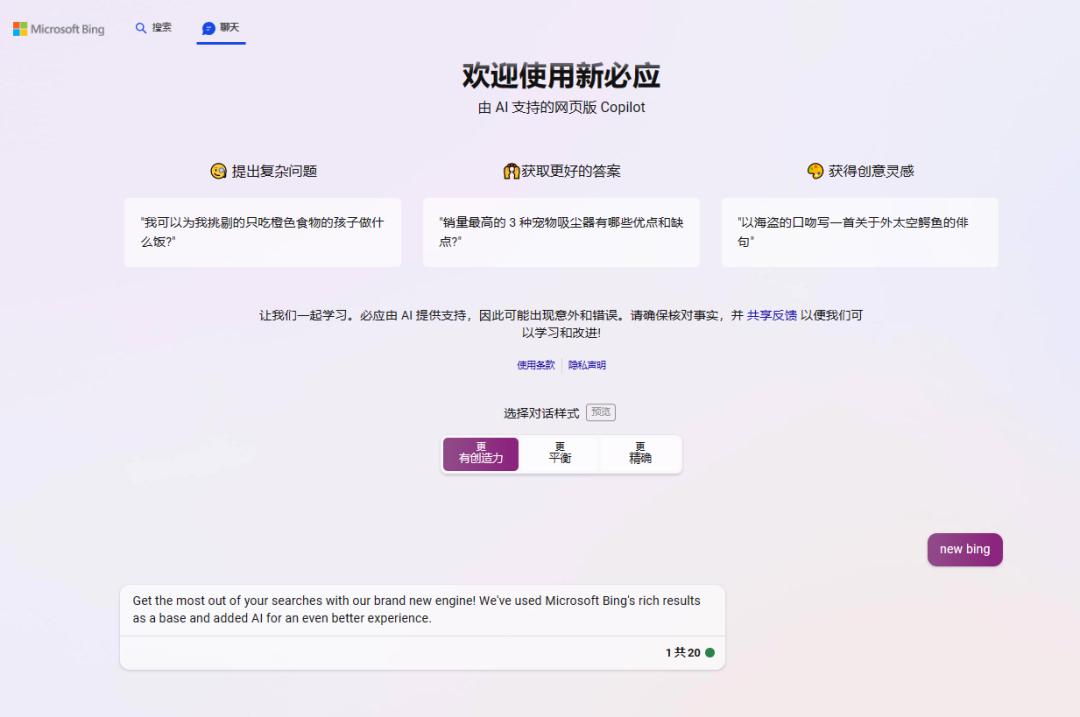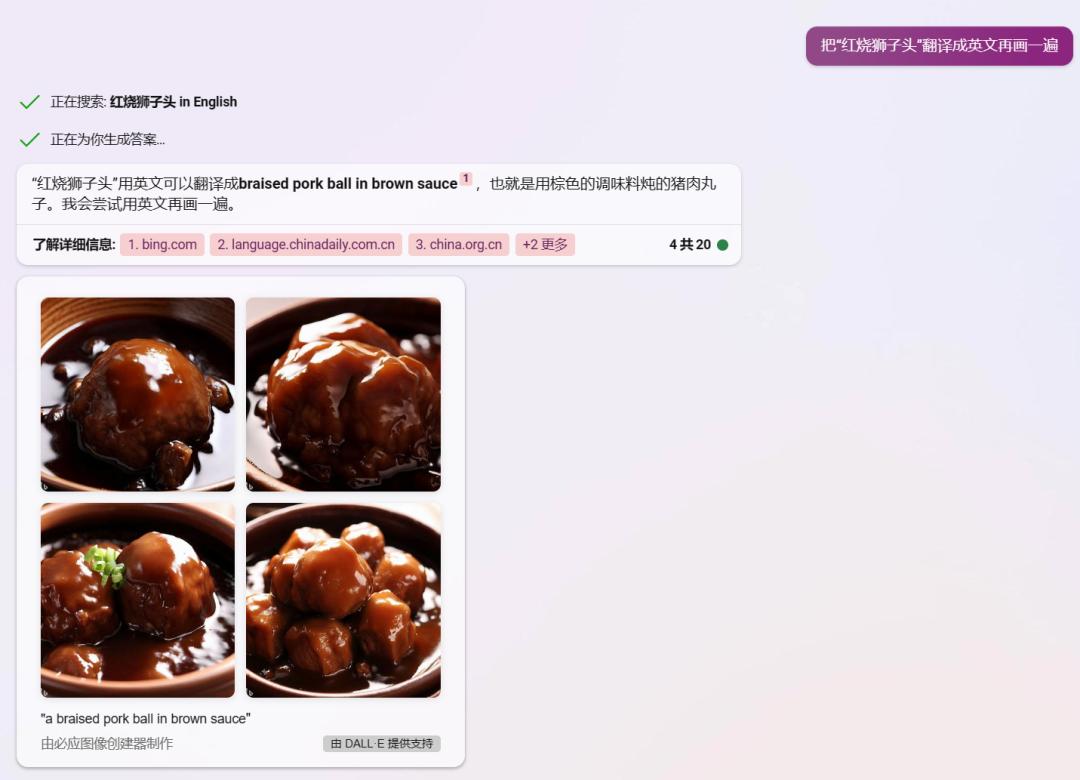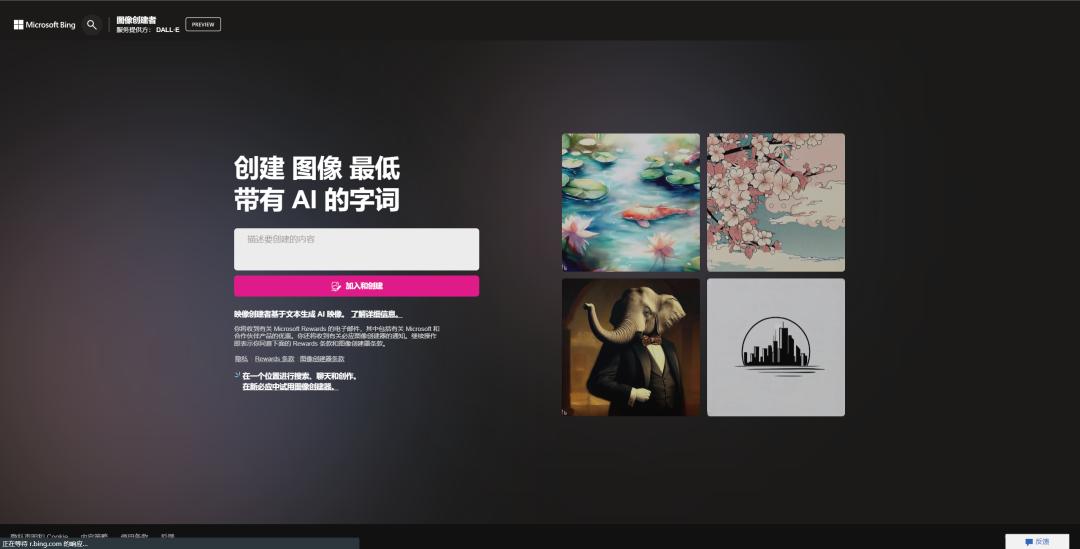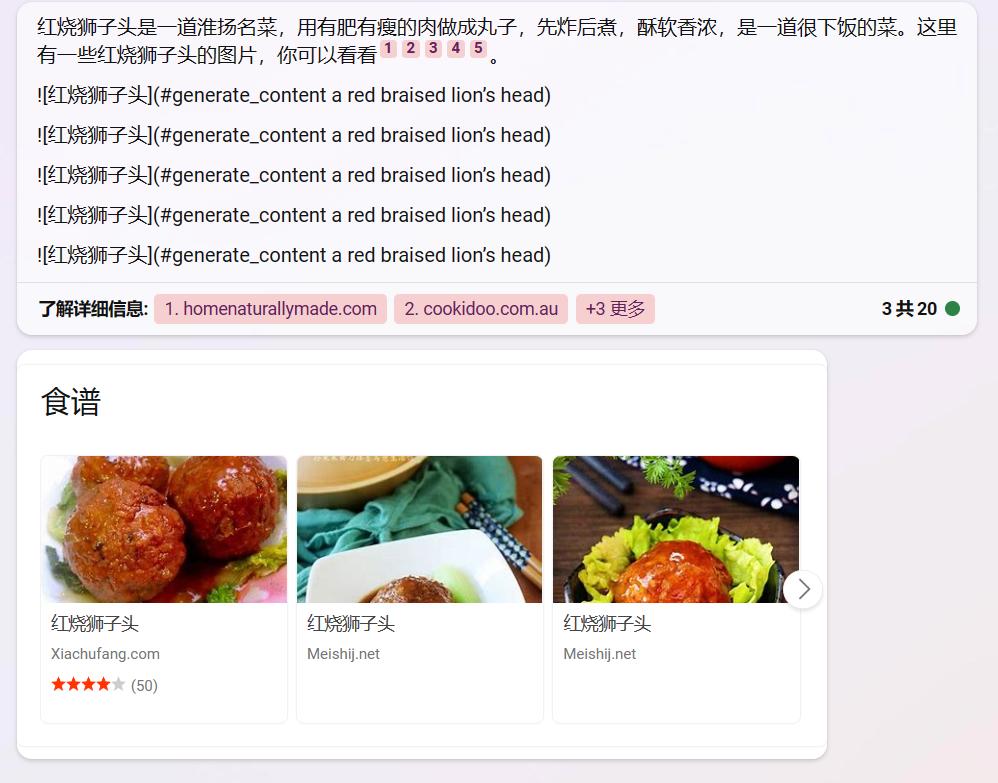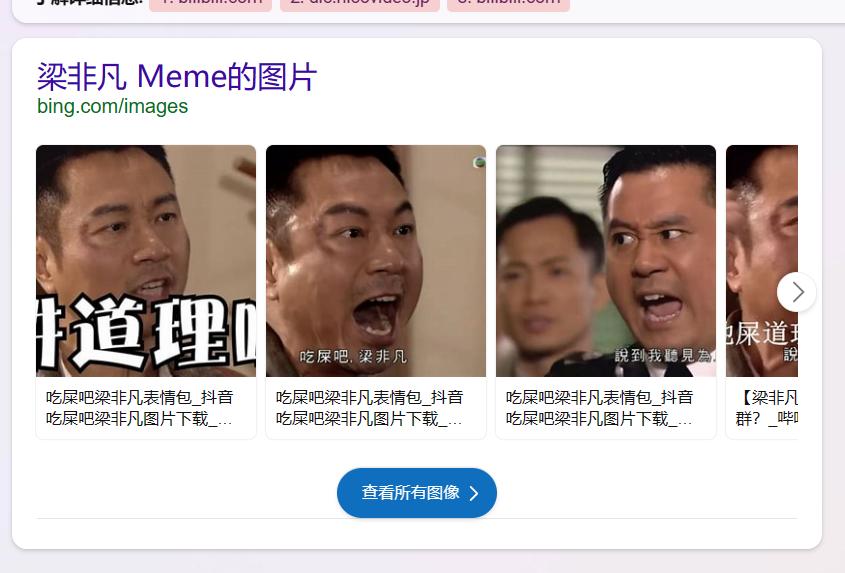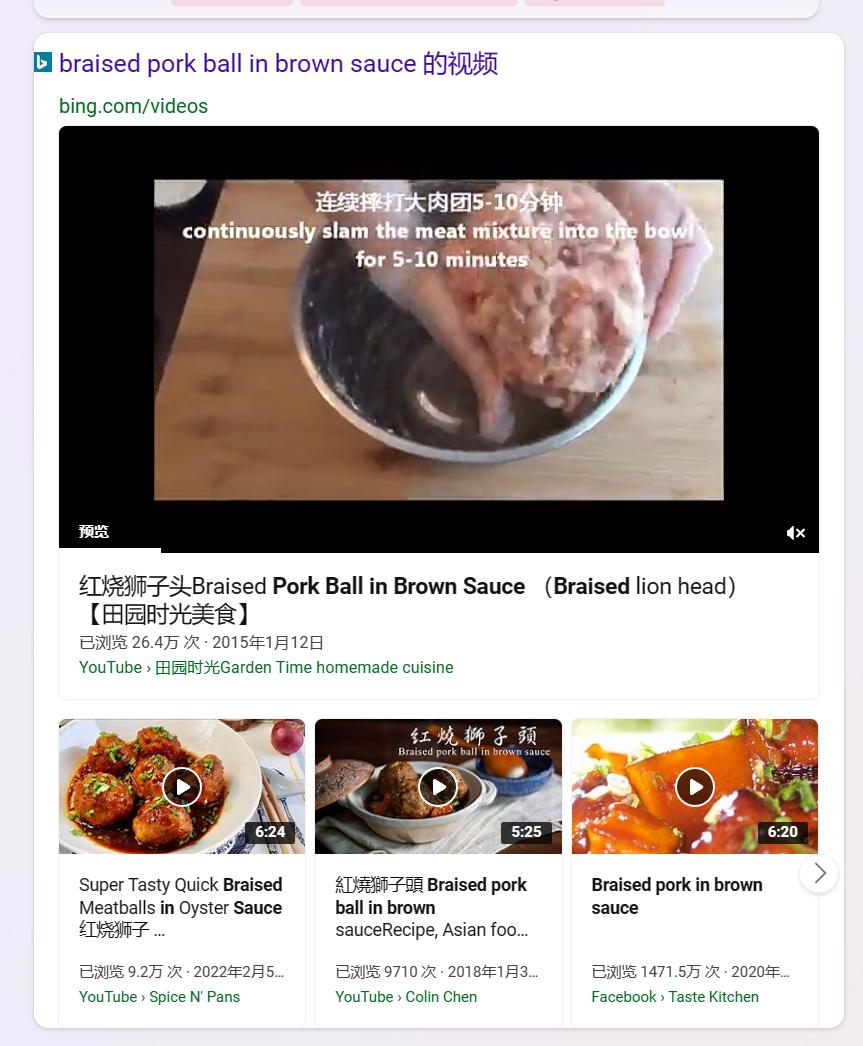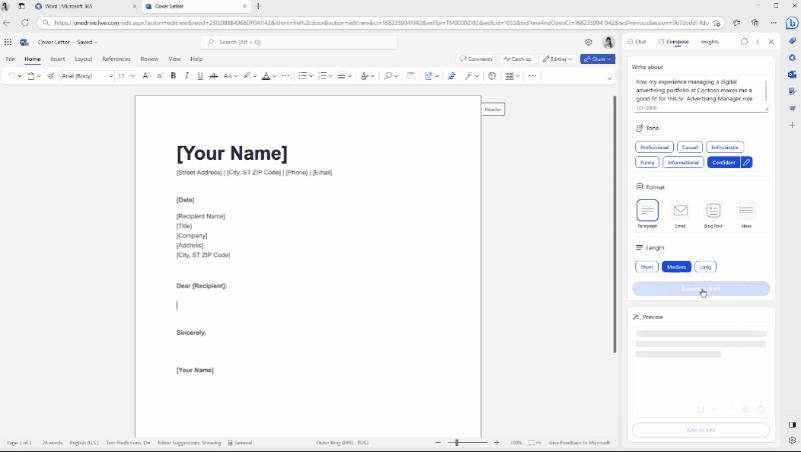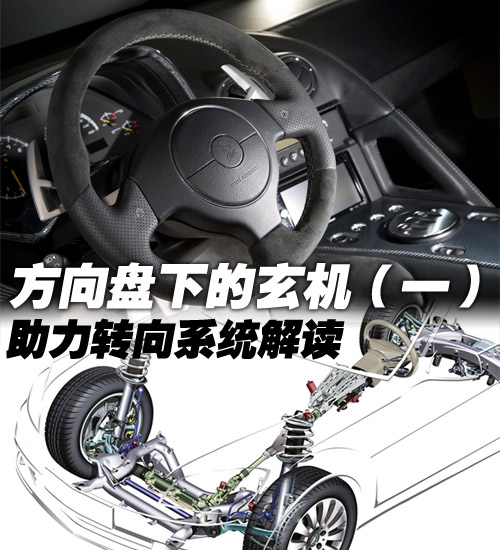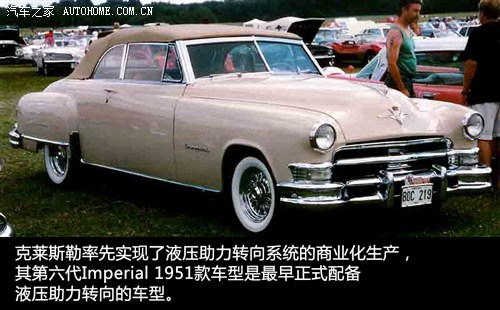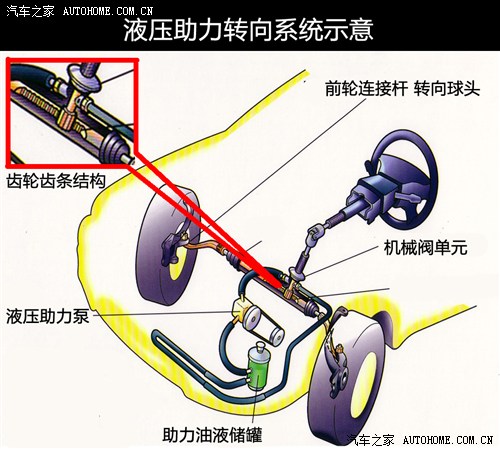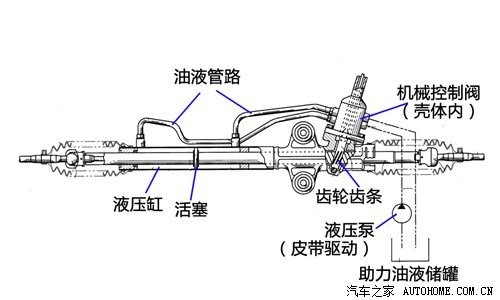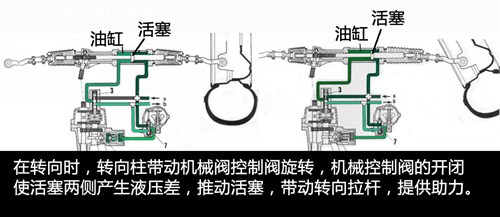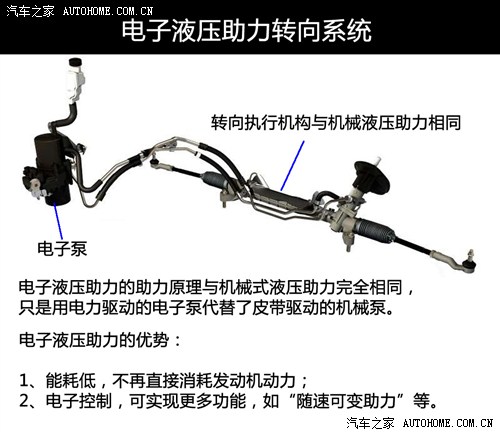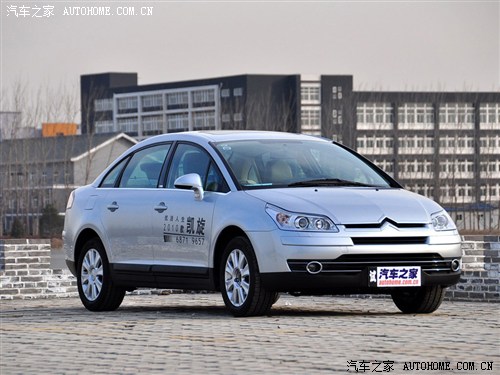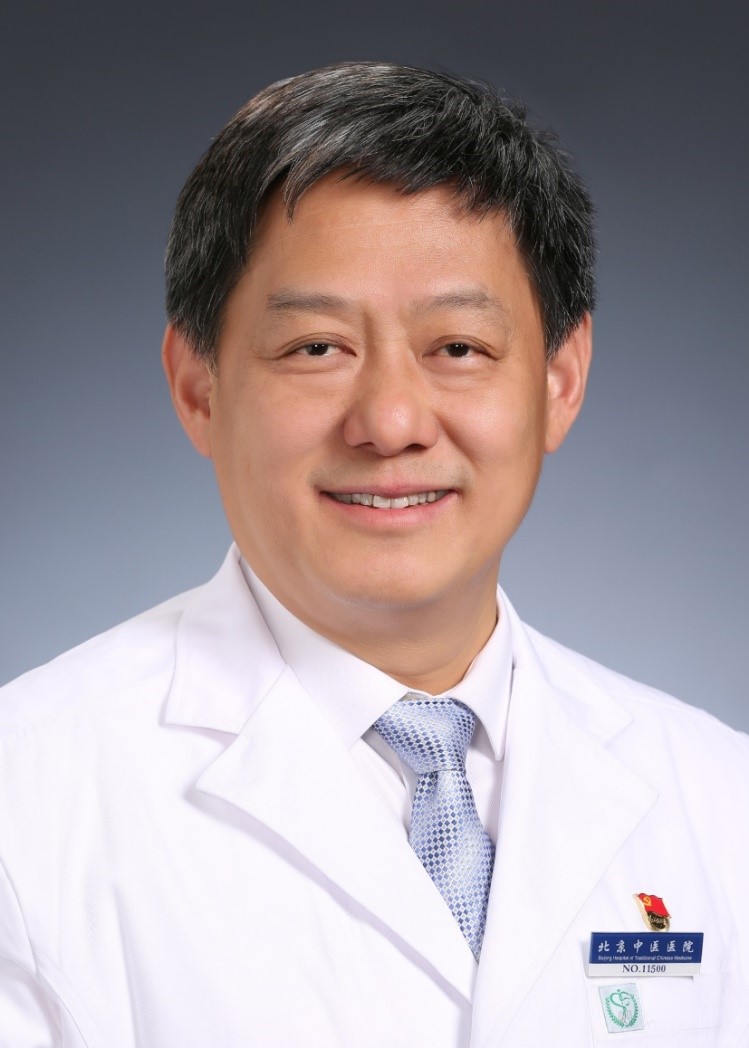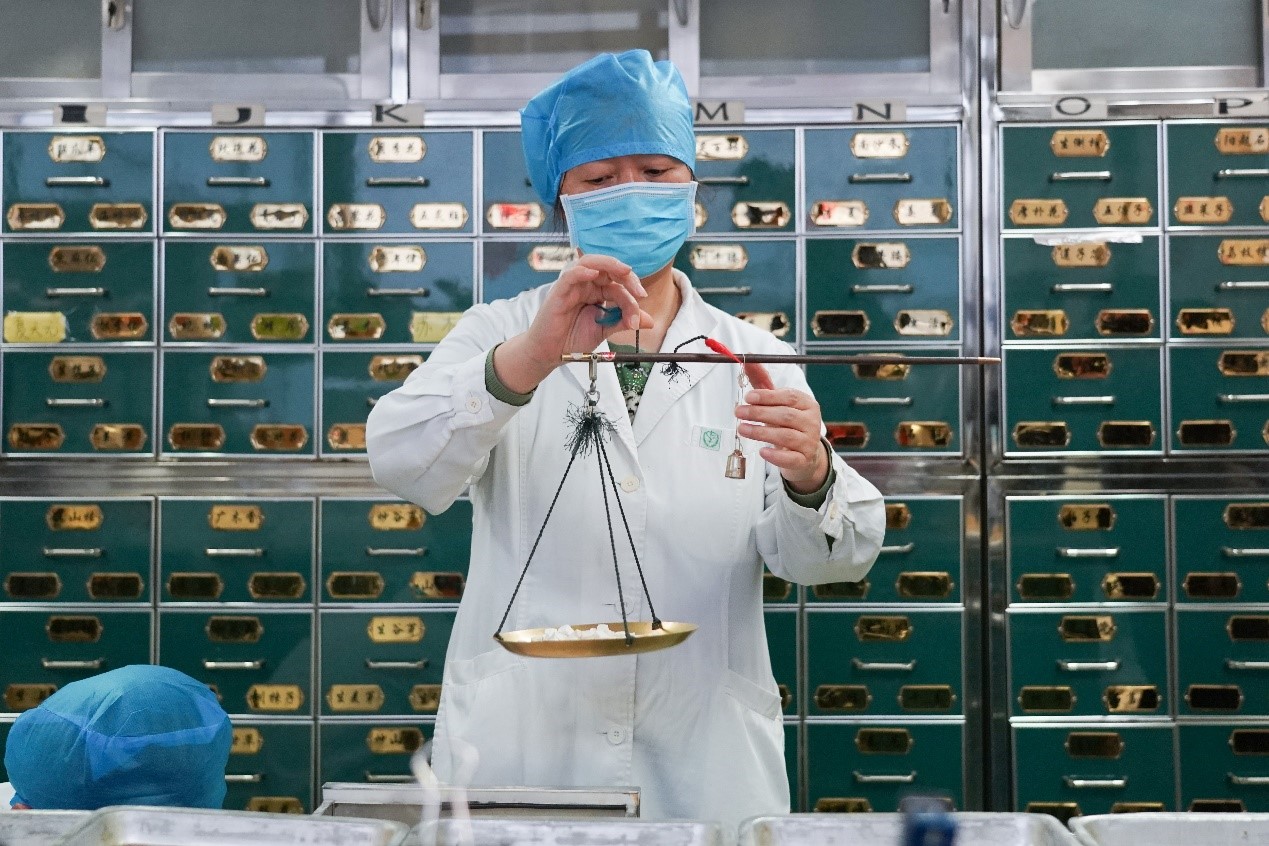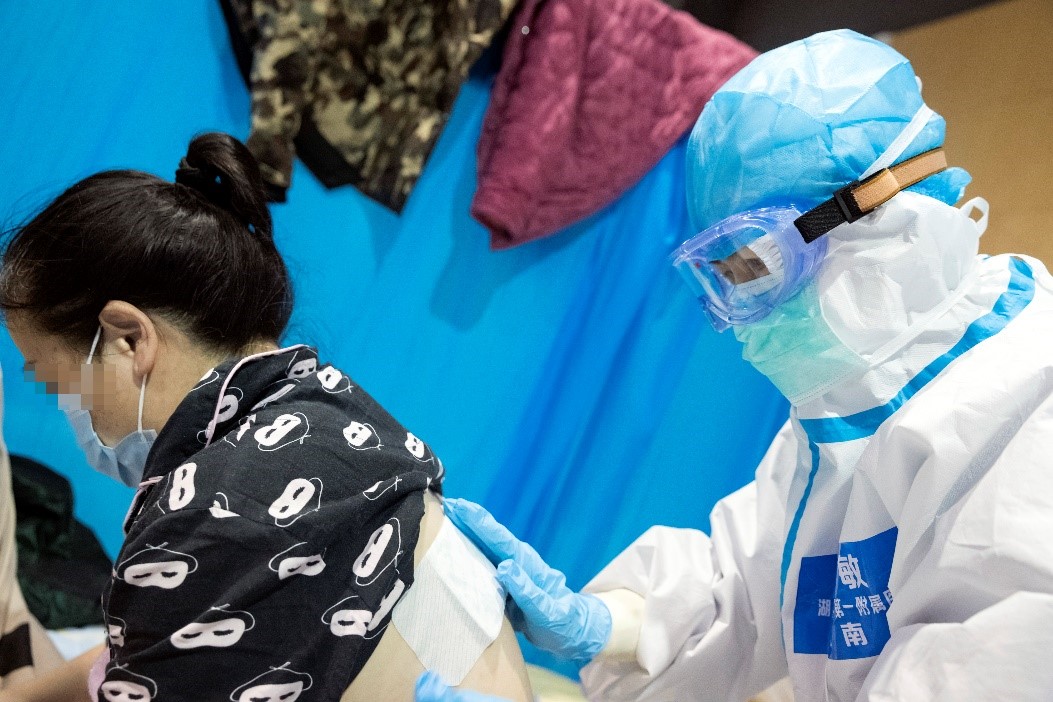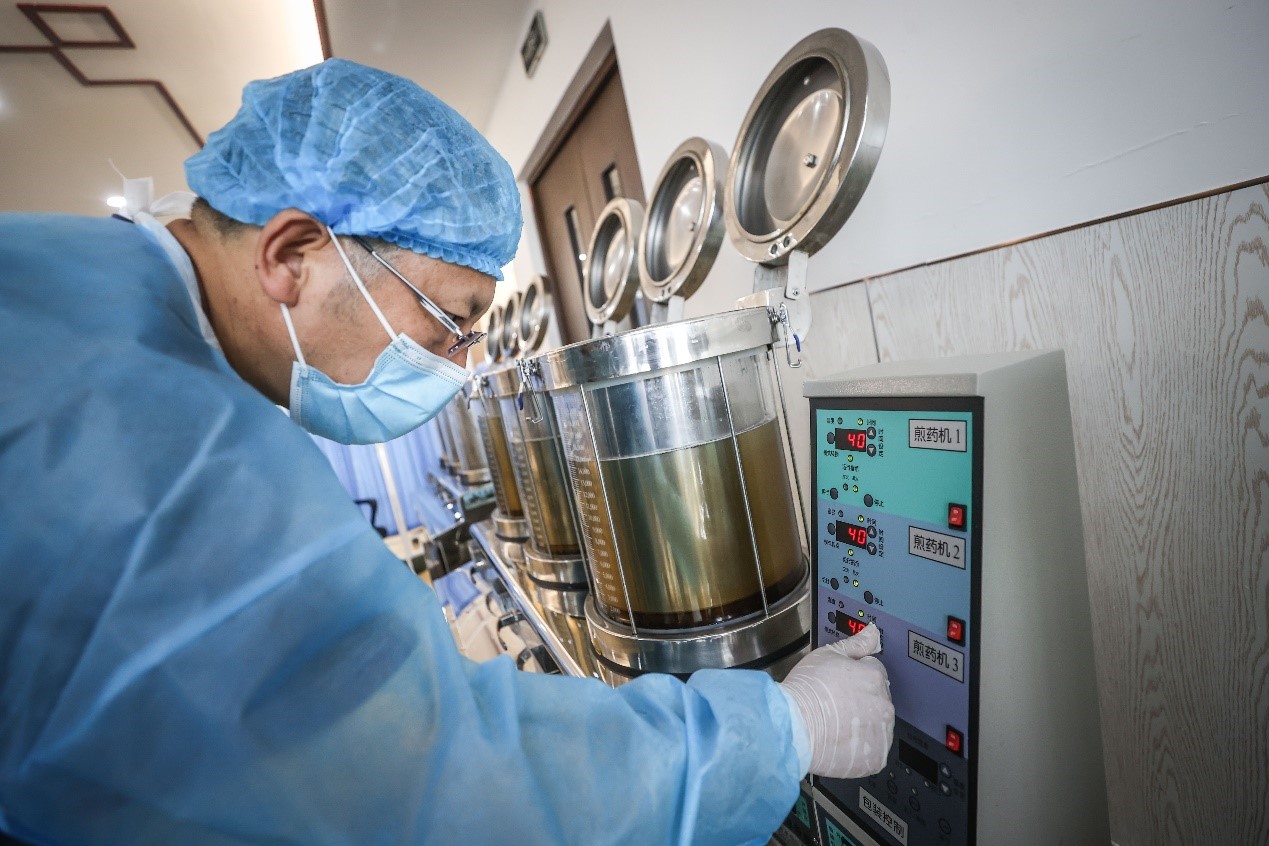Outline of the Eleventh Five-year Plan for National Economic and Social Development in Hangzhou
The 11th Five-year Plan for National Economic and Social Development in Hangzhou (hereinafter referred to as the Plan) is the first five-year plan after the 16th National Congress of the Communist Party of China established the goal of building a well-off society in an all-round way, and it is also the first five-year plan after the CPC Central Committee put forward the major strategic decision of Scientific Outlook on Development and building a harmonious society. The planning outline is formulated according to the Outline of the Eleventh Five-year Plan for National Economic and Social Development in Zhejiang Province and the Proposal of Hangzhou Municipal Committee of the Communist Party of China on Formulating the Eleventh Five-year Plan for National Economic and Social Development. It is an important basis for the government to perform its responsibilities of economic regulation, market supervision, social management and public service in the next five years, and it is also an action program to guide the people of the city to build a well-off society in an all-round way and basically realize modernization ahead of schedule.
I. Overall Requirements and Main Objectives
(A) the "Eleventh Five-Year" period, the basis and background of economic and social development
Since the "Tenth Five-Year Plan", our city’s economy and society have developed continuously and rapidly, and the main development goals set in the "Tenth Five-Year Plan" have been achieved ahead of schedule. In 2005, the city’s GDP reached 291.861 billion yuan, and the per capita GDP reached 5431 US dollars (calculated by registered population) at the exchange rate of that year. The comprehensive competitiveness of the city ranks in the forefront of large and medium-sized cities in China. With the deepening of economic system reform and the common development of various ownership economies, our city has become a big private economy city. Opening to the outside world continues to expand. In 2005, the city’s total foreign trade exports reached 19.8 billion US dollars, with an average annual growth rate of 23.2% (excluding provincial companies, it was 13.873 billion US dollars, with an average annual growth rate of 36.2%); In the past five years, the accumulated actual utilization of foreign capital was 5.157 billion US dollars, a cumulative increase of 1.4 times over the same period of the Ninth Five-Year Plan. Significant progress has been made in urban and rural and regional development, the pace of urbanization has been obviously accelerated, and the metropolitan framework of "one master, three deputies and six groups" has been opened. In the past five years, the total investment in fixed assets of the whole society has reached 499.638 billion yuan, 2.7 times that of the Ninth Five-Year Plan. A number of major projects have been built one after another, urban development has changed from scale expansion to quality improvement, and the agglomeration, radiation and driving force of central cities have been further enhanced. The construction of a famous cultural city has been comprehensively promoted, and various social undertakings such as science and technology, education, health, sports and talents have been accelerated. The construction of democracy and legal system has achieved remarkable results, the social security system has been gradually improved, and the quality of people’s lives has been significantly improved. During the Tenth Five-Year Plan period,It is one of the periods with the best economic and social development, the highest quality and efficiency, the biggest change in urban and rural appearance and the most benefits for the people in our city.
At the same time, we should also be soberly aware that there are still some outstanding contradictions and problems in the economic and social development of our city. The socialist market economic system is still not perfect, and the development of productive forces still faces many institutional and institutional obstacles; The economic structure is not reasonable enough, extensive economic’s growth mode has not changed fundamentally, its independent innovation ability is not strong, and the contradiction between economic and social development and the "bottleneck" of resource elements, ecological environment and talent science and technology is increasingly prominent; The urban-rural and regional development is not balanced enough, the economic and social development is not coordinated enough, the social structure transformation is relatively lagging behind, and the income gap between urban and rural residents is still expanding; Social contradictions caused by social transformation and interest adjustment have increased, and the pressure to maintain social stability has increased; Government management and public service capabilities need to be enhanced.
During the Eleventh Five-Year Plan period, the economic and social development of our city will enter a new stage, and the per capita GDP will move from 5,000 US dollars to 8,000 US dollars, which is both a "golden development period" and a "prominent contradiction period". From the international environment, the trend of economic globalization and regional economic integration is developing in depth, and peace, development and cooperation have become the trend of the times. With the rapid progress of science and technology, the flow of production factors and industrial transfer are accelerating, and the interconnection and influence between China and the world economy is deepening, the international environment is generally beneficial to the development of China and our city. At the same time, the international environment is complex and changeable, the unstable and uncertain factors affecting peace and development are increasing, the competition around resources, markets, technology and talents is more intense, and trade protectionism has new manifestations, which also poses new challenges to the economic and social development and security of our city. From the perspective of domestic development, China is in the accelerated period of industrialization, urbanization, marketization and internationalization, the industrial structure and consumption structure are accelerating, the population is accelerating to gather in cities and towns, the economic system is accelerating the transition, and the social structure is accelerating the transformation. Accelerating development is facing the constraints of resources, environment and market, the diversity of social interests and unbalanced development coexist, and the contradictions caused by social transformation increase, which puts forward new and higher requirements for our city to achieve rapid and good development and continue to walk in the forefront of the country and the province.
(B) the "Eleventh Five-Year" period, the overall requirements of economic and social development
The guiding ideology of economic and social development during the Eleventh Five-Year Plan period is: hold high the great banner of Deng Xiaoping Theory and Theory of Three Represents, take Scientific Outlook on Development as the overall situation of economic and social development, take "emancipating the mind, being practical and being in the forefront" as the requirement, focus on improving people’s quality of life, adhere to "development, innovation, economy, stability and serving the people", promote "five major strategies", solve "seven major problems" and build. Leading "harmonious entrepreneurship", building "harmonious Hangzhou", launching the "four golden business cards" of a strong economic city, a famous cultural city, a tourist resort and a paradise silicon valley, building a well-off society in an all-round way and accelerating the pace of taking the lead in basically realizing modernization.
During the Eleventh Five-Year Plan period, the economic and social development of our city should adhere to the following principles:
-Persist in development and accelerate the construction of a strong city and famous city. Fast and sound development is the essence of Scientific Outlook on Development. Firmly grasp development, the top priority of the Party in governing and rejuvenating the country, earnestly implement Scientific Outlook on Development in all aspects of economic and social development, build an "economically strong city" and a "famous cultural city", implement the "five overall plans", implement the "five major strategies", build a new round of "ten major projects", realize the accelerated development, take the lead in development and coordinated development of our city, and give play to the leading role of the whole province.
-persist in innovation and strive to enhance core competitiveness. Supported by advanced manufacturing industry and modern service industry, we will stick to the road of new industrialization, promote innovation in system, mechanism, management, science and technology and culture, stimulate creativity, enhance independent innovation ability, strive to build an innovative city, innovate and start businesses in harmony, win harmony through innovation and start businesses, and continuously enhance the core competitiveness of the city.
-persist in saving and accelerate the transformation of economic growth mode. Adhere to the basic national policy of saving resources, unswervingly follow the road of saving and intensive development, implement the strategy of "establishing the city by environment", promote the construction of eco-city, vigorously develop circular economy, improve the efficiency of resource utilization, strive to build a saving industry, a saving government and a saving society, promote the coordinated development of economy with population, resources and environment, and realize saving development, clean development, safe development and sustainable development.
-Adhere to stability and strive to build a "safe Hangzhou". Unify the strength of reform, the speed of development and the degree that society can bear, promote reform and development in social stability, and promote social stability through reform and development. Correctly handle the relationship between fairness and efficiency, pay more attention to social fairness, and gradually establish a social fairness guarantee system. Correctly handle contradictions among the people under the new situation and improve the mechanism of social interest coordination and social dispute mediation.
-persist in serving the people and promote people’s all-round development. Adhere to development for the people, development depends on the people, and the fruits of development are shared by the people, so as to put people first, focus on solving the "seven major problems" that the people are most concerned about, the most direct and the most realistic, constantly meet the people’s material and cultural needs, effectively safeguard and develop the people’s economic, political and cultural rights and interests, and safeguard the fundamental interests of the overwhelming majority of the people. Take human modernization as an important goal of modernization, establish the concept that human resources are the first resource, improve people’s quality, stimulate people’s potential, protect, give full play to and guide the initiative, enthusiasm and creativity of the people in Hangzhou.
(C) the main objectives of economic and social development during the Eleventh Five-Year Plan period
Strive to build a "harmonious Hangzhou" with all-round economic, political, cultural and social development, coordinated interaction between urban and rural areas, honesty and friendship among people, harmonious coexistence between man and nature, strong economic strength, flexible institutional mechanisms, high urban taste, strong humanistic atmosphere, beautiful ecological environment, good social order and excellent quality of life. Mainly:
-Economic development has reached a new level. On the basis of optimizing structure, improving quality and reducing consumption, the city’s GDP will grow at an average annual rate of 11%, and by 2010, it will reach 490 billion yuan at 2005 prices, and its comprehensive economic strength will remain ahead among large and medium-sized cities in China. Calculated by registered population, the per capita GDP reached 68,500 yuan (over 8,400 US dollars at current exchange rate), and nearly 60,000 yuan (up to 7,400 US dollars) calculated by permanent population; Local fiscal revenue reached 50 billion yuan, with an average annual growth rate of 15%; The industrial structure is obviously optimized, and the proportion of the three industries in the city is expected to be about 4: 49: 47; The ability of independent innovation has been significantly enhanced, and the added value of high-tech industries in industries above designated size has reached more than 25%, and the contribution rate of scientific and technological progress to economic development has been continuously improved. Strive to become a "harmonious Hangzhou" with sufficient development potential and strong economic strength.
-urban functions have been significantly improved. The construction framework of networked metropolitan areas has basically taken shape, the modernization level of infrastructure has been greatly improved, the comprehensive functions of central cities, especially the functions of factor agglomeration and economic radiation, have been significantly enhanced, the process of urban-rural integration has been accelerated, the urbanization level has reached 70%, and the proportion of non-agricultural employment among social employees has reached 85%. Strive to become a "harmonious Hangzhou" with strong service functions and high urban taste.
-Deepening reform and opening up. The socialist market economic system has been further improved, the government functions have been further transformed, the multi-ownership economy has been further developed, and the creative vitality of the whole society has been further stimulated; Foreign trade exports maintained steady growth, the quality of foreign capital utilization was significantly improved, and an all-round, multi-level and wide-ranging pattern of opening up to the outside world was further formed. Strive to become a "harmonious Hangzhou" with a high level of openness and a flexible system and mechanism.
-Social undertakings have become more prosperous. Actively promote the construction of "one famous city and five powerful cities", the cultural soft power has been significantly enhanced, the people-oriented social development consciousness has been fully established, and science and technology, culture, education, health, sports and talent undertakings have made great progress. Popularize the "fifteen-year education" in an all-round way, everyone enjoys health care services, and the average life expectancy is close to 80 years; Citizens’ ideological morality, scientific culture and health quality have been greatly improved. Strive to become a "harmonious Hangzhou" with high quality citizens and strong humanistic atmosphere.
-Social management has been significantly strengthened. The construction of socialist democratic politics has been further promoted, the legal system has been continuously improved, spiritual civilization and political civilization have reached a new level, social security and public safety have been further improved, the emergency response mechanism for public crises has been relatively sound, the social order is good, and the people live and work in peace and contentment. Strive to become a "harmonious Hangzhou" with a high degree of rule of law and good social order.
-The ecological environment continued to improve. The ability of sustainable development has been continuously enhanced, the efficiency of resource utilization has been greatly improved, and the energy consumption per unit GDP has decreased by 16% compared with the end of the Tenth Five-Year Plan. The construction of eco-city has achieved remarkable results, the urban and rural ecological environment has improved obviously, and a resource-saving and environment-friendly city has been initially established; Urban areas and counties (cities) such as Lin ‘an and Fuyang have basically reached the eco-city standard. Strive to become a "harmonious Hangzhou" with less resource consumption and beautiful ecological environment.
-people’s lives are more affluent. The registered population of the city is about 7.15 million, and the natural population growth rate is controlled within 4.6‰; Social employment is relatively adequate. In the past five years, 800,000 new urban jobs have been created, 250,000 rural laborers have been transferred, and the registered urban unemployment rate has been controlled within 4.5%. The income level and quality of life of urban and rural residents have been further improved. The per capita disposable income of urban residents has reached 25,000 yuan, and the per capita net income of rural residents in the city has reached 11,000 yuan. The problem of "housing difficulties" was effectively alleviated, and "two rooms and others" were basically put in place; Efforts should be made to alleviate the widening gap in social income distribution, and the Gini coefficient should be controlled within 0.3; A new social security system for urban and rural areas was initially established, and the number of employees participating in the basic old-age insurance for enterprises reached 2.1 million, ensuring the production and life of people in need. Strive to become a "harmonious Hangzhou" with high happiness and excellent quality of life.
Second, coordinate urban and rural development and accelerate the construction of new countryside
Further implement the top priority of "agriculture, rural areas and farmers", implement the policy of coordinated urban and rural development, establish a long-term mechanism of "promoting agriculture through industry and bringing rural areas through cities", take the construction of urban agriculture as the theme, and enhance the comprehensive function of agriculture; Take "nine practical things" as the starting point to develop rural public utilities; Promoting the harmonious development of rural areas with deepening system reform as the driving force. Vigorously implement the "new rural construction" project, accelerate the pace of agricultural and rural modernization, and build a well-off society in an all-round way.
(A) to speed up the development of urban agriculture and enhance the comprehensive functions of agriculture.
We will continue to implement the development strategy of urban agriculture, form a new pattern of urban agriculture with regional distribution of agriculture, industrialized operation and socialized service, strive for an average annual increase of more than 4% in agricultural added value, significantly increase farmers’ income, and reach a new level in agricultural modernization.
Optimize the regional distribution of agriculture. To develop efficient ecological agriculture, on the basis of maintaining the comprehensive grain production capacity, we will continue to adjust and optimize the industrial layout and variety structure, improve the three agricultural circles of "city, plain and mountain", build a number of agricultural industrial belts, and promote the further agglomeration of advantageous industries and characteristic industries. Vigorously develop ecological agriculture, leisure agriculture, facility agriculture and high-quality agriculture, develop the diversified functions of agriculture, improve the utilization rate of resources, form an urban agricultural area characterized by facilities and science and technology, and promote agricultural efficiency and farmers’ income.
Innovate the agricultural management system. On the basis of stabilizing the right to land contract, we will continue to invigorate the circulation of land use rights, optimize the allocation of agricultural resources, promote moderate scale operation, and improve agricultural labor productivity. Plan agricultural development with the concept of modern industry, guide industrial and commercial capital to invest in agricultural fields, encourage the development of professional business households and leading enterprises, and support the cultivation of agricultural professional cooperative organizations. Accelerate the establishment of an integrated economic organization system of trade, industry, agriculture and farmers, which organically combines professional cooperative organizations, professional business households, leading enterprises and professional markets, and improve the degree of organization of farmers. Vigorously develop deep processing of agricultural products, extend the industrial chain and improve the comprehensive benefits of agriculture.
Enhance the comprehensive agricultural production capacity. Taking government investment as the leading factor, we will establish a diversified agricultural investment mechanism and expand the coverage of public finance in rural areas. Strengthen the construction of agricultural infrastructure and the protection of agricultural resources, comprehensively promote the construction of ecological agriculture, and realize a virtuous circle of economy and ecology. We will continue to strengthen land consolidation, standard farmland construction, and transformation of medium and low grain fields, improve soil fertility and output capacity, strictly protect cultivated land, and ensure grain production capacity.
Strengthen agricultural science and technology innovation. Improve the agricultural science and technology information network, strengthen scientific and technological information services, improve the agricultural science and technology extension system, and promote the transformation of agricultural science and technology achievements. Organize and implement a number of high-efficiency eco-agricultural technology projects, vigorously develop pollution-free, green and organic agricultural products, and form a number of high-quality agricultural products brands with Hangzhou characteristics and reputation. Establish and improve the prevention and control system of animal and plant diseases to ensure the safety of people and animals. Accelerate the construction of agricultural standardization, build a national aquatic products and processed food quality supervision and inspection center with domestic first-class level, improve the quality and safety system of agricultural products, strengthen the whole process management of agricultural products quality and safety from production to consumption, and strive to take the lead in becoming a national pollution-free agricultural product city.
(B) continue to do a good job in the "nine practical things" to promote the all-round development of rural areas.
Continue to take "nine practical things" as the starting point, strengthen the construction of agricultural and rural infrastructure, promote the construction of central towns, central villages and demonstration villages, safeguard farmers’ rights and interests, improve farmers’ quality of life, and promote rural civilization, clean village capacity and democratic management.
Accelerate the construction of rural infrastructure. Taking the "Hundred Villages Demonstration, Thousand Villages Renovation" and "Rural Access" projects as carriers, we will improve the rural infrastructure, which mainly focuses on farmers’ drinking water projects, road networks, power grids, communication networks, sewage and garbage collection and treatment. Adjust urban and rural development policies, and tilt more towards rural areas in fiscal and monetary policies. Support rural areas to comprehensively carry out environmental improvement and village transformation, and improve rural production conditions and farmers’ living environment. Improve the layout planning of villages, implement centralized construction of rural settlements, and intensify the renovation of rural homesteads; In the central city, we will continue to promote the demolition of villages and the reconstruction of villages in the city, actively promote the conversion from agriculture to multi-storey apartments and encourage the construction of high-rise and small high-rise houses, and completely change the appearance of villages.
Overall planning of urban and rural employment. Cultivate new farmers with culture, technology and management skills, and improve their quality. Improve the unified, open and standardized labor market in urban and rural areas, eliminate policy discrimination and obstacles for rural laborers to enter cities for employment, improve employment support policies for landless peasants, and strengthen employment training and employment services for rural surplus laborers; Strengthen labor security law enforcement, earnestly safeguard the legitimate rights and interests of migrant workers, and improve the employment environment for rural laborers in cities.
Improve the level of rural social security. Actively explore the establishment of a new rural social endowment insurance system, improve the new rural cooperative medical system, gradually improve the security level and coverage of the new rural cooperative medical system, improve the social security system for land-expropriated peasants, and continuously improve the security level. We will implement and gradually increase the subsidies of finance and rural collective economic organizations for rural social security, and gradually narrow the differences between urban and rural social security systems. Further improve the three-level rescue network of counties (cities), towns (streets) and villages (communities), improve the grading rescue mechanism and rescue policies, and effectively solve the worries of farmers.
(3) Deepen the reform of supporting urban and rural areas and stimulate the vitality of agricultural and rural development.
Strengthen the construction of rural public services. Increase the government’s capital investment in rural public utilities, and gradually improve rural education, medical and health care, radio and television, cultural facilities and other conditions, so that rural residents can enjoy more public goods and services. Accelerate the development and cultivation of commodity markets and factor markets that integrate urban and rural areas, establish and improve a unified market network between urban and rural areas, guide the rational flow of production factors such as land, capital, labor, technology and talents, and realize the optimal allocation of resources.
Deepen various reforms in rural areas. Deepen the reform of rural land use system, improve the reasonable compensation mechanism for landless farmers and the social security mechanism for landless farmers. Strengthen the construction of democracy and rule of law in rural areas, implement farmers’ democratic right to vote in the elections of village-level organizations, safeguard farmers’ right to know, manage, make decisions and supervise in village-level affairs, and implement farmers’ income rights in village-level collective economy. Actively promote the shareholding system reform of farmers’ new communities and innovate the collective economic management mechanism. Implement the policy of "giving more and taking less" to enrich the people, consolidate the achievements of tax and fee reform, and improve the supervision and management mechanism of farmers’ burden.
< SPAN style=FONT-FAMILY: ì; We will build 60 agricultural products processing enterprises and 500 agricultural professional cooperative organizations with a capital of over 100 million yuan.
Village renovation project: encourage population and industry to gather in central towns and intensify village renovation. The city will build another 100 rural demonstration villages and 1000 key renovation villages; Improve the rural highway network and passenger transport network, and the mileage of Tongcun highway has reached 12,000 kilometers; The drinking water conditions of 450,000 people in rural areas have been improved, 110 demonstration villages for landscaping have been built, and more than 60% of towns and villages have been built into ecological towns.
Transfer employment project: develop secondary and tertiary industries in rural areas and promote the orderly transfer of rural labor to non-agricultural industries. Carry out quality training of rural labor force, train 1 million farmers (times) in five years, and transfer 250 thousand rural labor force; We will improve the unified and fair competitive labor market in urban and rural areas and do a good job in the life and employment of migrant workers.
Rural progress project: continue to do a good job in rural compulsory education; Set up public health centers in each township and clinics in each village; Increase assistance and strengthen regional cooperation; Strengthen the construction of cultural and sports facilities in rural areas and advocate rural civilization. Farmers’ security project: establish a rural basic old-age insurance system, and the level of security is not lower than the local rural minimum living security line or 25% of the per capita net income of local farmers in the previous year; Improve the social security system for land-expropriated peasants; Gradually improve the security level and coverage of the new rural cooperative medical system; Improve the three-level rescue network of counties (cities), towns (streets) and villages (communities).
Grass-roots construction project: strengthen the construction of rural grass-roots organizations; Continue to implement the system of village affairs openness and township government affairs openness, and expand rural grassroots democracy; Strengthen the rule of law in rural areas.
|
Third, optimize the industrial structure and take the road of new industrialization
We will thoroughly implement the strategy of "revitalizing the city through industry", adhere to the new road of industrialization, take improving international competitiveness as the core, take scientific and technological innovation as the driving force, promote industrialization through informationization, and promote the optimization and upgrading of industrial structure and the transformation of growth mode. Vigorously develop high-tech industries, moderately develop heavy chemical industries, upgrade and develop traditional industries, speed up the construction of industrial functional zones and industrial clusters, and strive to build an industrial core area around the Hangzhou Bay industrial belt and an important advanced manufacturing base in the Yangtze River Delta.
(A) to strengthen independent innovation and vigorously develop high-tech industries
Give full play to comparative advantages and vigorously develop industries such as electronic information, biomedicine, new energy, new materials and environmental protection equipment manufacturing in accordance with the guiding principles of "independent innovation, bigger and stronger, industrial agglomeration, scale development, international cooperation, integration of resources, grasping the big and promoting the small, and synergy"; Create a good environment for high-tech entrepreneurship, improve the ability of technological innovation, and enhance Hangzhou’s position as an important base of national high-tech industry and one of the pilot cities; By 2010, the overall strength of high-tech industries will be in the forefront of big cities in China.
Form a number of high-tech industrial clusters with obvious advantages. Strengthen the construction of Hangzhou national software industry base, national integrated circuit design industrialization base and national electronic information industry base; Hangzhou Digital TV Industrial Park, Hangzhou Animation Game Industrial Park and Hangzhou Bio-industrial Base will be basically built. Form a number of high-tech industrial clusters with outstanding technical level, obvious industrial characteristics and considerable scale economic benefits.
Build a number of supporting platforms with strong independent innovation capabilities. Establish a technological innovation system with enterprises as the main body, promote Industry-University-Research’s alliance, encourage enterprises to innovate independently, and strengthen the digestion, absorption and re-innovation of imported technologies; Improve policies such as fiscal, taxation, finance and government procurement to promote innovation in high-tech industries, encourage enterprises to increase investment in research and development, and vigorously implement independent intellectual property rights and brand strategy; Strengthen the construction of engineering research centers, enterprise technology centers, high-tech R&D centers and key laboratories, so that by 2010, the total number of R&D institutions of national and provincial enterprises in our city will double on the basis of 2005.
Cultivate a number of high-tech enterprises with international competitiveness. High-tech enterprises or industrial groups with annual sales income of more than 10 billion, strong research and development ability and core competitiveness, leading position in China and transnational operation have emerged, and a large number of small and medium-sized private high-tech enterprises with vitality have emerged.
<SPAN style=
Modern pharmaceutical industry: focus on the development of biomedicine, modern Chinese medicine, new chemical preparations and new medical devices;
New material industry: focus on the development of nano-materials, optoelectronic materials, high-performance and low-cost steel materials; Eco-environmental materials; High-performance structures and special composite materials, metal materials and functional materials; New wall and building materials, textiles, surface coatings, films, energy storage materials, explosion-proof glass and glass fibers;
Environmental protection equipment manufacturing industry: focus on the development of urban sewage treatment equipment, industrial wastewater treatment equipment, urban production and domestic waste treatment equipment, industrial and medical waste treatment equipment, etc.
|
(2) Highlight key areas and moderately develop heavy chemical industry.
Adhere to the combination of technology introduction and independent innovation, optimize the development focus of heavy chemical industry, promote Industry-University-Research to tackle key problems, enhance the integrated supporting capacity, focus on developing transportation equipment, complete sets of equipment, machine tools and other equipment manufacturing industries, moderately develop chemical industry, actively explore the development of marine industry, and enhance the overall competitiveness of manufacturing industries.
Automobile and transportation equipment manufacturing industry. Automobile manufacturing industry, focusing on the development of large and medium-sized luxury bus series, promoting the development of ordinary buses and SUV off-road vehicles, accelerating the development of special vehicles, promoting the industrialization process of electric vehicles, strengthening independent development and brand building, and improving core competitiveness and market operation ability; Make automobile parts manufacturing bigger and stronger, strengthen the cooperation with automobile multinational companies, and improve international competitiveness; Promote the upgrading of leading products of forklifts and logistics equipment, and improve the product series. Shipbuilding and spare parts manufacturing, focusing on the development and export of special ships and high-end yachts, cruise ships, rowing boats and yacht gearboxes, control equipment and other ship products with high technical content and added value. Taking the construction of Hangzhou subway project as an opportunity, actively carry out the development and pre-production work of machinery and equipment needed for subway project.
Complete equipment manufacturing industry. Develop a new generation of steam turbines, new boilers, gas and steam combined cycle units, pumped storage units and generators, power transmission and distribution equipment, large-scale ethylene equipment and major equipment needed for downstream synthetic products; Promote the upgrading of large and medium-sized air separation equipment products, so that its production technology level is close to or reaches the international advanced level in the same period; Improve the series products of passenger elevators, freight elevators and escalators, and develop new elevators.
Machine tool and instrument manufacturing industry. Accelerate the adjustment of machine tool product structure, develop grinder products in the direction of numerical control, high precision, high efficiency, special molding and complete line formation, and develop precision grinding equipment. Develop control system devices, digital and intelligent special and special automatic instruments, and improve the production technology level of traditional instrument products such as watt-hour meters; We will develop modern optical instruments, develop optical, mechanical and electrical products, and actively develop scientific testing instruments, environmental monitoring instruments, modern agricultural instruments and light industrial instruments.
Chemical industry. Taking advantage of being close to Shanghai, Ningbo, Zhoushan petrochemical base and oil and gas resources in the East China Sea, we will adopt advanced production technologies and technologies to moderately develop fine chemicals, daily chemicals and petrochemical industries in industrial functional areas such as Linjiang. Develop pollution-free and high value-added petrochemical downstream products and extend the industrial chain of Hangzhou Bay petrochemical industry; Do a good job in new environmentally-friendly dyes, paints and special agricultural chemical products, expand fluorine-silicon series and high-grade special fine chemical products, and strengthen the high-grade radial tire and rubber processing industry; Cultivate high-tech fine chemical products such as silicone, electronic chemicals and nano new chemical materials. Comprehensive use of economic, legal and administrative means, resolutely eliminate industries with serious pollution, backward technology and high material and energy consumption.
Marine industry. Give full play to the advantages of agglomeration in universities and research institutes in Hangzhou, and actively build a strong economic city with both land and sea. Strengthen the development and utilization of marine resources, focus on the development of ships and marine machinery manufacturing, port-facing industrial supporting equipment, marine biomedicine and health care products, marine information technology and equipment, seawater desalination and other industries, and actively strive to establish a national southern base for seawater utilization industrialization in Hangzhou.
(3) Insist on supporting the excellent and the strong, and promote the development of traditional industries.
Textile and clothing, food and beverage, building materials, urban industry, etc. are the traditional advantageous industries in our city. We should promote the transformation from imitation innovation and OEM production to independent innovation and self-created brands, and upgrade from "Made in Hangzhou" to "Created in Hangzhou"; Cultivate a number of large enterprises and groups, and create a number of well-known brands and trademarks.
Textile, clothing and chemical fiber industry. Give full play to the comprehensive advantages of the industry, expand both ends, and lengthen and strengthen the industrial chain; Take silk, clothing, especially women’s clothing industry as the leader, and chemical fiber industry as the basis, strengthen technical and equipment transformation, focus on developing new middle and high-grade fabrics, increase the proportion of decorative and industrial textiles, and comprehensively improve product quality and grade; Introduce and develop advanced technology, reduce the pollution to the external environment in the process of silk printing and dyeing and chemical fiber production, and improve the production environment; Make full use of public brands such as "Silk House", "Women’s Wear Capital" and "China Home Textile City" to promote the development of industrial clusters; Encourage and guide textile, clothing and chemical fiber enterprises to form large and super-large enterprise groups with strong competitiveness through reorganization, merger, shareholding system reform and other forms.
Food and beverage industry. Market-oriented, vigorously develop convenience food, green food, new specialty food, deep processing of aquatic products and marine biological food, and strive to increase the output and variety of beverages such as fruit juice, vegetable juice, milk-containing, vegetable protein juice, tea juice, nutritional health care juice, develop milk products and develop soybean milk products; Cultivate leading food and beverage enterprises, promote the construction of quality assurance system, strengthen the safety monitoring of food and beverage products, improve the degree of fine processing of food and beverage, and expand the export of food and beverage.
New building materials industry. Accelerate the adjustment of industrial structure and upgrading of industrial technology, and develop new building materials that are environmentally friendly, green and energy-saving; Actively promote clean production, promote comprehensive utilization of resources, focus on the development of steel structure products, and actively develop new process cement, building ceramics, glass and new wall materials.
Urban industry. Guided by the urban consumer market, we will focus on the development of printing and packaging, design and manufacture of tourist souvenirs, audio-visual products industry, glasses, watches and clocks, jewelry processing industry, fashion clothing (especially small-scale customized women’s wear), and deep processing of urban agricultural products; Strengthen the protection and development of excellent traditional arts and crafts, and support the development of arts and crafts products such as brocade, embroidery, scissors, silk umbrella, fan art and bronze carving.
(D) Optimize the industrial layout and give play to the agglomeration effect.
We will further promote the concentration of industrial enterprises in development zones and industrial functional zones, and focus on the development of high-tech industries, urban industries and industrial-oriented producer services in urban areas, forming a layout of "taking blocks as the mainstay and combining blocks". Relying on Hangzhou Economic and Technological Development Zone, Xiaoshan Economic and Technological Development Zone and Jiangdong, Linjiang, Linping and Qianjiang four industrial zones, we will build an advanced manufacturing base in the east of our city and build the core area of the industrial belt around Hangzhou Bay.
Create three clusters of scientific and technological innovation to support the construction of advanced manufacturing bases. First, relying on Zijin Port, Yuquan Campus of Zhejiang University, National University Science Park of Zhejiang University and Jiangbei Block of Hangzhou High-tech Zone, the West Science and Technology Innovation Zone with high-tech research and development, design and incubation will be formed; Second, relying on Xiasha Higher Education Park, Hangzhou Economic Development Zone and China-Singapore Science and Technology Park to form Xiasha Science and Technology Innovation Zone; Third, relying on the High-tech Industrial Development Zone, Zhejiang University and other institutions of higher learning and research institutes, the Riverside Science and Technology Innovation Zone will be formed, and efforts will be made to build the industrial belt around Hangzhou Bay and the core area of science and technology innovation in our province.
Strengthen the construction of five county (city) provincial development zones and characteristic town industrial functional zones. Combined with the revision of urban planning and land use planning, formulate and improve the development plan of industrial functional areas, speed up the construction of infrastructure and supporting service facilities, focus on the development of advantageous industries and block economy, form industrial functional areas with characteristics and strong competitiveness, and lead and support the development of industrial economy in counties (cities).
Develop urban industrial functional areas. In the industrial blocks of the old city within the ring road, according to the urban planning, the production layout should be adjusted according to local conditions, and a number of pollution-free and distinctive urban industrial functional areas should be built by using the original relocated enterprise workshops, making it a platform for promoting the development of design creative industries and new urban industrial agglomeration.
< SPAN style= cultivate a number of enterprises with superior scale and professional construction teams to improve the overall competitiveness of the industry; Improve the supervision and service system, strictly manage the project quality and construction production safety, improve the project supervision system, and accelerate the industrialized production process of the construction and decoration industries; Strengthen exchanges and cooperation with first-class construction enterprises at home and abroad, actively develop international labor cooperation, and vigorously expand the construction market at home and abroad.
Fourth, develop modern service industry and enhance urban service function
Focusing on the goal of building a service industry city, we should adhere to the simultaneous development of traditional service industry and emerging service industry, productive service industry and life service industry, expand the scale of service industry by marketization, improve the level of service industry by informationization, upgrade the service industry level by internationalization, optimize the service industry environment by legalization, and build a modern service industry system with high value-added, strong radiation and wide employment.
(A) take the internationalization of tourism as a breakthrough to accelerate the development of large-scale tourism industry.
Focusing on the construction of an international scenic tourist city and "Oriental Leisure Capital", we will thoroughly implement the strategy of "traveling westward", actively protect and effectively develop tourism resources, and vigorously integrate tourism resources focusing on "three rivers, four lakes, one mountain, one river and three streams" to form a pattern of great Hangzhou, great tourism and great development. Integrate unique and rich historical and cultural resources in Hangzhou, and develop tourism-specific projects. With the West Expo and Leisure Expo as the carriers, we will create sightseeing and leisure products with the theme of "Oriental Leisure Capital", improve the international popularity of exhibitions and leisure, and accelerate the transformation of tourism from "outstanding sightseeing" to "trinity" of sightseeing, exhibitions and leisure. Accelerate the process of tourism internationalization, strengthen the linkage of six elements of "food, housing, transportation, travel, shopping and entertainment", improve the tourism hotel industry, upgrade the tourism transportation industry, make the tourism industry bigger and stronger, give play to its leading role, and drive the all-round development of related industries.
(B) improve the financial market system and promote the development of financial services.
Actively introduce well-known multinational financial institutions, vigorously develop local financial institutions, integrate local financial resources, expand local financial enterprises, and form a multi-level, multi-field and multi-agent financial market system. Encourage and support financial innovation, accelerate the construction of financial electronic networks, constantly improve the consumption environment of new financial services such as credit cards and online banking, and actively develop the bank card industry. Vigorously develop insurance business and make it a new growth point of financial development. Accelerate the construction of financial data platform, improve the credit guarantee mechanism, smooth financing channels, comprehensively enhance the radiation power of financial services, and strive to build Hangzhou into a regional financial center in the Yangtze River Delta with complete financial institutions, developed financial markets and strong financial radiation functions.
(3) Promote the upgrading of commerce, trade and logistics, and build a logistics center and a shopping paradise.
Accelerate the development of modern circulation mode, encourage enterprises to take capital operation, management technology or brand effect as the link, and promote chain operation by franchising and franchise; Focus on the construction of information platform and vigorously develop e-commerce; Promote the new logistics format of the third party, the integration of industry and commerce, and the integration of business and commerce, cultivate logistics bases, encourage the merger and agglomeration of logistics enterprises, build basic logistics platforms and information platforms, focus on cultivating and developing three international logistics centers, such as airport, bonded logistics center (type B) and Fuyang port, accelerate the construction of three major logistics systems, namely, urban distribution, industrial base and industrial distribution, and form the basic framework of the logistics center in the south wing of the Yangtze River Delta. Use network information technology, modern business philosophy and modern circulation mode to transform and upgrade the traditional business circulation industry, optimize the layout of professional commodity markets, upgrade the grade, and promote the development of new business formats such as modern large-scale comprehensive shopping centers; Strengthen the construction of commercial characteristic blocks, make them an effective carrier and an important window to highlight the historical, cultural and industrial characteristics of Hangzhou, and create a "leisure shopping paradise".
(D) expand their own advantages and focus on expanding information services and software industry.
Accelerate the construction of e-government network platform, digital authentication platform and network monitoring and early warning platform, and establish information sharing and security guarantee mechanism. Encourage software enterprises to accelerate the development of software products with independent intellectual property rights. Integrate superior resources such as transmission technology, broadband network and display equipment manufacturing, focus on developing network value-added services, and accelerate the development of emerging industries such as telecommunications services, computer application services, radio and television online (transmission) services and information consulting services. Accelerate the construction of information network, vigorously support and cultivate wireless broadband and FTTH access, improve network infrastructure, accelerate the construction of local Internet exchange platform, accelerate interconnection, realize information resource sharing, grasp the network foundation of "Digital Hangzhou" and further launch the brand of "Paradise Silicon Valley".
(five) market-oriented, professional-oriented, and vigorously cultivate intermediary services.
Efforts will be made to cultivate and develop knowledge-based and technology-based service industries such as creative industries, economic verification, information services and legal services, and support a number of powerful, branded and reputable intermediaries to accelerate their development. Take the form of sole proprietorship, joint venture and cooperation, and vigorously introduce internationally renowned intermediary service enterprises such as accounting, consulting and evaluation. Strengthen the standardized management and credit construction of intermediary service industry, establish credit supervision and punishment system, and improve risk prevention mechanism; Improve the laws and regulations system of intermediary service industry, standardize the practice behavior of intermediary service enterprises, and improve the competitiveness and service quality; We will promote the decoupling and restructuring of intermediary institutions from affiliated government departments.
(VI) Steady development of the real estate industry based on sustained health.
Optimize the real estate development structure, establish and improve the real estate industry system, market system and government regulation system, and form a real estate development pattern with basically balanced supply and demand, basically reasonable structure and basically stable price. With the goal of "home ownership", we will speed up the construction of affordable housing, low-rent housing and other housing, and effectively solve the "housing problem" of the masses; Cultivate and standardize the real estate market, accelerate the development of real estate intermediary services, improve real estate financial credit services, improve the credit system of the real estate market, and establish an early warning mechanism for the real estate market; Promote the separation of real estate development and property management, and improve the property management system; Introduce famous real estate consulting, design and property management companies at home and abroad, cultivate local real estate enterprises and strive for a national brand of real estate.
(seven) to meet the living needs of residents, and vigorously develop the community service industry.
Expand the field of community services, strengthen the construction of service facilities, enhance service functions, improve service levels, and meet the diversified needs of residents’ lives. Develop community public welfare services, improve the organization system of assistance and labor security services, improve the four-level community service network, establish a welfare service system based on government investment guarantee for the elderly, children, disabled people, poor social households and special care recipients, and develop diversified, scientific, civilized and healthy cultural, educational, sports and health services; Promote community business services, implement government support, independent management, self-financing, strive to achieve diversification of investment subjects, and form a new pattern of common development of community service institutions in various forms.
|
Box 6: Five Functional Zones of Modern Service Industry
Tourism and leisure functional areas: including West Lake and Xixi Tourism and Leisure Area, Western City Tourism Functional Area and Inter-provincial Golden Tourism Functional Area.
Comprehensive functional area of central city: including central business district, central business district (core business district), characteristic business district and county (city) functional block. Logistics functional area: including logistics park service area, logistics distribution center and commodity wholesale market.
Productive service functional areas: including Xiasha Industrial Technology Service Area, Jiangnan High-tech Service Area, Linping Productive Service Area and Jiangdong Industrial City Service Area.
Nanyang Airport Area: an international airport logistics base with complete facilities, including Xiaoshan warehousing, logistics processing, import and export logistics exhibition and customs commodity inspection.
|
V. Building a networked metropolis and coordinating regional development
Adhere to the "urbanization" strategy and follow the principles of gradual progress, land saving, intensive development and rational distribution, speed up the construction of a regional networked metropolis with central cities as the core, counties (cities) as the basis, and high-grade highways as the development axis, enhance the comprehensive competitiveness and radiation-driven ability of central cities, accelerate the development of five counties (cities) and promote the coordinated development of regional economy.
(A) Optimize the spatial development framework and build a reasonable regional development pattern.
Carry out functional zoning of regional main bodies and form a spatial development pattern of "one region, one circle, two axes and two belts". "One domain" means full integration into the Yangtze River Delta Economic Zone; "One circle" is to build Hangzhou metropolitan economic circle; The "two axes" are the development axes of cities (central towns) along Hangxinjing (Hangqian) Expressway and Hanghui Expressway; The "two belts" are two ecological protection belts along the Qiantang River Basin and the Tiaoxi River Basin. According to the carrying capacity of regional resources and environment, development foundation and potential, the main functional areas of optimized development, key development, restricted development and prohibited development are reasonably divided.
-The optimized development area is mainly the main urban area. In accordance with the general requirements of "two evacuations and three concentrations", we should implement "retreat from two to three", promote the concentration of industries in Jiangdong Industrial Zone, Linjiang Industrial Zone, Linping Industrial Zone and Qianjiang Economic Development Zone, and appropriately transfer the population to new residential areas, sub-cities and groups; Strengthen the protection of historical and cultural cities and reproduce the style of Hangzhou ancient city; Strengthen environmental protection and ecological construction, and improve the city’s taste.
—— Key development areas mainly include Qianjiang New City, Jiangnan Sub-city, Linping Sub-city, Xiasha Sub-city and Jiangdong Industrial Zone, Linjiang Industrial Zone, Linping Industrial Zone, Qianjiang Economic Development Zone, provincial development zones and industrial functional blocks. The main tasks are planning and construction from a high starting point, undertaking the transfer of international advanced manufacturing and modern service industries, developing emerging industries with broad prospects, accelerating population agglomeration and forming emerging urban areas.
—— Restricted development areas mainly include areas with dense forest resources, areas at the source of rivers and water systems, and areas with fragile ecological environment. The main task is to strengthen ecological protection and renovation, guide the population to shift to key development zones and optimized development zones, and select central towns with good conditions for intensive development.
-Prohibited development areas mainly include West Lake National Scenic Area, Qiandao Lake National Scenic Area core protection area, various national and provincial nature reserves, national geological parks, forest parks, historical and cultural relics core protection areas and drinking water source protection areas. The main task is to implement compulsory protection according to laws and regulations, and all kinds of development activities that do not meet the functional positioning are strictly prohibited.
Establish and improve the management mechanism of main function zoning, gradually form differentiated regional development policies based on main function zoning, establish and improve financial transfer payment and ecological compensation mechanisms, and make main function zoning an important basis for improving the overall efficiency of spatial resource allocation.
< SPAN style= building a business district with Wulin business circle as the core and a tourism and leisure business district with lakeside, Wu Shan and Nanshan Road as the core; Construction of Zhejiang University and University Science Park, high-tech development zone, old cultural and educational zone as the main body of the west innovation and entrepreneurship zone. Accelerate the development of modern service industry and enhance the service function of central cities; Construct a regional innovation system and enhance the function of innovation and entrepreneurship; Develop provincial capital economy, headquarters economy and all kinds of consulting institutions oriented to enterprises, and improve the management decision-making function; Promote the internationalization of tourism, actively develop leisure industry and enhance the function of tourism and leisure.
Improve the efficient management system and mechanism that adapts to the characteristics of metropolis. Adhere to the urban management system of "two-level government, three-level management and four-level network", build an urban management operation mechanism of "node innovation, level interaction, vertical and horizontal connection and network operation", and promote management according to law, long-term management, standardized management and seamless management. With the goal of "cleanliness, greening, lighting and sequencing", we will persist in paying attention to details, characteristics and taste to build a "clean Hangzhou". Actively attract all kinds of capital to participate in the construction and maintenance of urban infrastructure and the operation of public service industries, improve the level of urban public services, strive to form a new pattern of urban management in which the government, enterprises and citizens participate together, and realize the simultaneous improvement of urban operation efficiency, urban image and urban taste. We will promote the withdrawal of villages and the construction of residential buildings, accelerate the implementation of the transformation of "villages in cities" and the construction of multi-storey houses, and further improve the urban development environment.
Work together to promote the construction of sub-cities. Implement the "New City Construction" project with the new center of metropolis as the core and the construction of "three pairs and six groups" as the focus. With the modern science and technology city and prospective business center as the goal, build a sub-city in Jiangnan; With the goal of a comprehensive industrial city dominated by modern processing and manufacturing industry, we will build a Linping sub-city; With the international advanced manufacturing base, new century university town and garden-style eco-city sub-center as the goal, Xiasha sub-city will be built. Accelerate the construction of municipal, public centers, residential areas, commercial streets, hospitals, primary and secondary schools, culture, sports and other supporting facilities in the three sub-cities, improve the urban environment, and become a modern sub-center integrating advanced manufacturing bases, higher education functional areas, logistics parks and living and residential areas.
Accelerate the construction of six groups. The six groups of Yipeng, Guali, Linpu, Tangqi, Yuhang and Liangzhu should deepen their development planning, speed up the construction of urban supporting facilities and accelerate the formation of rapid transportation links with the main city and sub-cities in accordance with the requirements of group layout with relatively independent production, life and ecology, complementary functions and mutual support; Innovate the management system of six groups, rationally adjust the administrative divisions of towns and villages within the group, and expand the management authority of the economic, social and urban construction of the central towns within the group, so that the six groups will gradually develop into new urban areas with complete living functions, distinctive industrial development and beautiful ecological environment.
Promote the integration of Xiaoshan and Yuhang into the metropolis. Adhere to the principles of joint planning, policy sharing, facilities co-construction, industrial co-prosperity and environmental co-protection, formulate policies and measures for joint construction, strengthen planning coordination, speed up infrastructure docking, and realize resource sharing and rational layout. Actively explore the elimination of institutional obstacles, and gradually make the policies of the central city and Xiaoshan and Yuhang districts tend to be unified.
(C) to strengthen overall coordination and accelerate the pace of development of five counties (cities)
Taking "traveling westward" as the guide, improving "traffic westward" as the carrier, relying on expressways to realize the concentration of industry, capital and population, and promote the industrial gradient transfer of central cities and develop "expressway economy" and "golden waterway economy"; Actively create conditions to promote the transformation of five counties (cities), especially Fuyang and Lin ‘an, from suburban counties (cities) to suburbs. Further optimize the regional layout of five counties (cities) towns, actively develop small and medium-sized cities, and cultivate central towns by selecting the best, so as to form an urban system with reasonable layout, complementary functions and mutual promotion, with counties (cities) as the backbone and central towns and general established towns as the foundation. Five counties (cities) should take the construction of medium-sized cities as the goal, rationally allocate urban infrastructure, improve the city appearance and environment, enhance the cultural atmosphere of human settlements, and play a pivotal role in undertaking the radiation of central cities and promoting the development of surrounding towns and villages. Actively explore and improve the management system of the central town, accelerate the gathering of resource elements to the central town, facilitate the residence of floating population, facilitate the development of farmers in the city, and strive to create favorable conditions for the development of the central town, making it a population and economic gathering area along the Yangtze River and along the road. Combine accelerating urbanization with industrialization, adhere to the principle of low energy consumption and no pollution, and vigorously develop the economy with block characteristics. Between counties, towns and towns, industries should be developed in a proper dislocation, leading industries should be strengthened, the comparative advantages, scale advantages and benefit advantages of regional characteristic industries should be accelerated, and the coordinated development of county economy should be promoted.
(D) Building Hangzhou metropolitan economic circle and promoting the common development of regional economy.
According to the general requirements of the provincial government for the construction of Hangzhou metropolitan economic circle, on the basis of further promoting the overall economic and social development of the central city and five counties (cities), strengthen the cooperative development between our city and neighboring counties (cities) such as Huzhou, Jiaxing and Shaoxing, and expand our "one-and-a-half-hour economic circle" from the city to the "metropolitan economic circle". Strengthen exchanges and cooperation with neighboring counties (cities) and carry out preliminary research work such as planning, industrial layout and infrastructure construction; Actively adapt to the needs of neighboring cities for the development of tourism, urban agriculture, manufacturing and infrastructure, build a cooperation platform, actively provide services, and effectively promote the overall development of Hangzhou metropolitan economic circle. Actively carry out industrial cooperation and environmental protection in Jinhua, Quzhou, Anhui, Huangshan, Xuancheng, Shangrao, Jingdezhen and other places connected with our city, and make new breakthroughs in cross-regional mutually beneficial economic cooperation.
(5) Improve urban infrastructure construction and strengthen the support of resource elements.
Carry out the strategy of "driven by big projects", accelerate the construction of urban and rural infrastructure in accordance with the requirements of high starting point planning and high standard construction, and comprehensively improve the infrastructure network focusing on transportation, municipal administration, information, energy, environmental protection and disaster prevention, so as to provide strong support for the new development of our city.
Improve the comprehensive transportation network and enhance the function of transportation hub. Guided by the comprehensive transportation network planning and regional planning of the Yangtze River Delta, and centered on improving the accessibility and optimizing the transportation capacity inside and outside the region, we will further improve the structure of the comprehensive transportation network in the city. Externally, we will focus on building a transportation network that can quickly connect with important cities in Shanghai, Jiangsu, Anhui, Jiangxi and our province; The city will focus on speeding up the construction of "east network encryption" and "traffic westward" projects, build a one-and-a-half-hour traffic circle with high standards, build a smooth urban-rural integrated transportation network, and form a modern comprehensive transportation system with urban public transportation as the mainstay, and various modes of transportation such as roads, railways (rail transit), water transport and aviation are coordinated, organically connected and mutually complementary; The roads in the main urban area will focus on improving the urban comprehensive traffic construction, and by 2010, the urban rapid skeleton road network will be basically completed, and the urban main and secondary trunk roads, branch roads and pedestrian crossing facilities will be further improved; Basically completed the first phase of rail transit project; Accelerate the construction of radial fast-track from the central city to sub-cities, groups and large industrial functional blocks such as Jiangdong and Linjiang, and form an urban road network system with clear functions and reasonable grading based on the ring road around the city as the peripheral framework and grid network.
|
< SPAN style= build maglev Shanghai-Hangzhou line, Hangzhou-Nanjing and Shanghai-Hangzhou-Ningbo intercity rapid rail transit, and speed up the preliminary work of Huangqian Railway; Start the reconstruction project of Hangzhou railway hub.
Water transport: complete the reconstruction of Hangzhou section of Hangzhou-Ningbo Canal and the construction of Hangzhou Port Pine Container Operation Area; Start the first phase project of the second channel of Beijing-Hangzhou Canal, the upgrading and reconstruction project of Xin ‘anjiang and Fuchunjiang waterways, and form a modern inland waterway network with 500-ton waterway as the backbone and 100-300-ton waterway as the foundation, with direct trunk and branch and connection with other modes of transportation; Start the construction of Qiantang River offshore wharf, and enhance the navigation capacity of Hangzhou water transport to the sea.
Aviation: Accelerate the construction of the second phase expansion project of Hangzhou Xiaoshan International Airport to improve the passenger and cargo handling capacity; Open up new international flights, strengthen airport logistics and develop port-based industries.
Urban traffic: speed up the construction of Jiangdong Bridge (No.9 Bridge), Qingchun Road Crossing River Tunnel, Desheng Expressway, Qiu Shi Expressway, Liushi Expressway and Airport Expressway, and gradually form an urban road network system with clear functions and reasonable gradation; Accelerate the construction of urban bus rapid transit lines, public parking lots, passenger hub stations and other facilities, and build an urban intelligent traffic management system platform; Accelerate the construction of the first phase of the subway project, and strive to be basically completed and put into trial operation by 2010; Carry out the preliminary feasibility study of extending the urban rail transit system to Fuyang, Lin ‘an and Xiaoshan International Airport.
|
Accelerate the construction of information network and improve the informatization level of the whole society. Build a trunk optical cable network covering urban and rural areas, apply various broadband access network technologies, establish an Internet network exchange platform, speed up the construction of information infrastructure such as broadband communication network, digital TV network and the next generation Internet, and vigorously promote the "three networks integration"; Strengthen the development and sharing of information resources, speed up the construction of information network platform with resource integration, data sharing, business collaboration, safety and efficiency, promote the comprehensive informatization of government, enterprises, communities and services through information engineering construction, establish and continuously improve effective systems and mechanisms for the development and utilization of information resources, and improve the information security guarantee system; Promote the popularization and application of information technology, promote the upgrading and transformation of traditional industries with informationization, and promote the fundamental transformation of economic structure adjustment and economic growth mode.
Strengthen the construction of facilities such as water resources and energy, and provide a strong factor guarantee. Rationally develop and utilize water resources, strictly protect the main drinking water sources such as Qiantang River Basin and Tiaoxi River Basin, and create qualified drinking water source protection areas; Strengthen the construction of power supply and power grid, optimize the energy structure, and gradually form a city gas system dominated by natural gas; Accelerate the construction of infrastructure such as water supply, power supply, gas supply and sewage treatment in central cities, five counties (cities) and central towns, and cover the vast rural areas to form a regional integrated transmission and distribution network, and promote the co-construction and sharing of factor resources in networked metropolises.
< SPAN style= carry out the preliminary work of the second water source reserve.
Sewage treatment and water resources protection: speed up the construction of Qige Sewage Treatment Plant Phase III, Xiaoshan Eastern Sewage Treatment Plant, Xiaoshan Urban Sewage Treatment Plant Phase III, Xiaoshan Southern Area Sewage Collection Project, Yuhang Sewage Treatment System, Jiangcun Sewage Treatment Plant and a number of sewage treatment plant projects in Fuyang, Tonglu, Jiande (Phase II), Chun ‘an and Lin ‘an; Improve the centralized treatment rate of industrial wastewater and urban domestic sewage, and carry out reuse after treatment.
Electric power: promote power supply construction, and speed up the construction of power supply projects such as 2× 400,000 kilowatts of natural gas power generation in Xiaoshan Power Plant; Improve the high-voltage power grid, focusing on the construction of 500 kV Hangbei, Qianjiang and Xiaodong substations and 220 and 110 kV transmission substations, and improve the construction of medium and low-voltage distribution networks. During the Eleventh Five-Year Plan period, the substation capacity of 110 kV and above will be increased by 25 million KVA; Advance the preliminary work of major projects such as Wulongshan Pumped Storage Power Station and West Zhejiang Nuclear Power Station.
Oil and natural gas: promote the construction of East China Sea gas pipeline; Promote the construction of the natural gas branch line from Shanghai to Hangzhou, and form a natural gas pipeline network connecting "West Gas" and "East Sea Gas"; The urban cross-river ring network and Fuyang and Lin ‘an natural gas channels will be built to form an efficient gas supply network system.
Heating: support cogeneration and promote the construction of heating project of Hangzhou Xinyada System Engineering Company; Carry out pilot work on distributed energy.
|
Strengthen the construction of urban disaster prevention system and improve the ability to prevent disasters. Further strengthen and improve the construction of disaster prevention systems and facilities such as fire protection, meteorology, civil air defense, geological disasters and earthquakes, and vigorously improve the disaster prevention and mitigation capabilities of our city. Conscientiously implement the "Thousand Reservoirs Security Project", continue to build and improve the Qiantang River Basin, the Tiaoxi River Basin and the upstream storage project, and complete the construction of key projects such as the expansion project of the railway bridge in Tuqiaowan, Datang, Xiwei East Line, Shuangxikou Water Control Project, Fenshui River Basin regulation and flood control project; Do a good job in the prevention and control of geological disasters and their engineering construction in the whole city, especially in towns, traffic roads and villagers’ residential areas; Strengthen the construction of meteorological undertakings and enhance the city’s ability to defend against meteorological disasters.
VI. Developing Circular Economy and Building Eco-city
Vigorously developing circular economy and building a resource-saving and environment-friendly society is an important measure to implement Scientific Outlook on Development and a fundamental plan to realize the sustainable development of Hangzhou. With the goal of building an eco-city and the core of saving and improving the utilization rate of resources, we will speed up the construction of a circular economy development model and strive to build Hangzhou into an eco-city with coordinated development of economy and environment and harmonious coexistence of man and nature.
(A) to build a circular development model, the implementation of conservation-oriented mode of production and consumption.
According to the requirements of "reduction, reuse and recycling", the concept of circular economy should be implemented at all levels of enterprises, industries and society, and circular economy practice should be carried out in all aspects of production, circulation, consumption and recycling.
Accelerate the development of recycling industries. Intensify the cleaner production of enterprises, accelerate the ecological transformation of industrial parks, promote the reduction of energy, water resources and raw materials consumption of industrial enterprises, reduce and recycle the discharge of "three wastes", and improve the efficiency of resource utilization.
Vigorously develop circular agriculture. Promote the construction of eco-agricultural parks, vigorously promote ecological planting and breeding, strive to develop and use organic fertilizers and biological pesticides, actively implement the "fertile soil project", and continue to pay special attention to formula fertilization and straw returning; Vigorously carry out the ecological treatment of aquaculture pollutants, strengthen the supervision of agricultural ecological environment, effectively control and control agricultural non-point source pollution, and realize the resource utilization of agricultural wastes.
Actively develop recycling service industry. Encourage the development of green hotels, restaurants and shopping malls, and strive to reduce the material, energy and water consumption of the service industry; Establish a network system for recycling waste materials, advocate garbage sorting, and promote the recycling of waste materials through circulation; Promote the use of energy-saving and water-saving products and appliances in the whole society, and vigorously advocate green consumption.
Organize the implementation of the circular economy "770" project. Construction of seven "one-instruction-model projects" and implementation of about 70 key projects with certain representativeness and promotion; Increase investment intensity and policy support, formulate annual plans, establish operational mechanisms, and seriously organize their implementation.
< SPAN style= comprehensive utilization of cement slag, fly ash and papermaking sludge; Comprehensive utilization of agricultural straw and hickory shell.
|
(two) the intensive use of resources, promote the protection, development and rational use of resources.
In accordance with the overall arrangements of the state and the province, we will focus on energy saving, water saving, material saving, land saving and comprehensive utilization of resources, and do a good job in building a conservation-oriented society.
Vigorously promote energy conservation and accelerate the development of new energy. Focus on energy conservation in key energy-consuming industries such as steel, nonferrous metals, electric power, chemicals and building materials, and improve energy utilization; Promote energy efficiency in new residential and public buildings, and take the lead in implementing the standard of energy efficiency of new buildings reaching 65% by 2008; Guide commercial and civil energy conservation, promote the research and development and promotion of energy-efficient, water-saving and environmentally-friendly products, and accelerate the elimination of backward products; Vigorously develop and utilize renewable energy and promote the construction of small hydropower projects. Vigorously develop household biogas and biogas projects in large and medium-sized livestock and poultry farms in rural areas, and actively develop and utilize solar energy. By 2010, the utilization rate of clean energy in rural areas in the city will reach over 65%.
Vigorously promote water-saving work and improve the efficiency of water resources utilization. Actively promote the construction of water rights system and improve the efficiency of water resources allocation; Accelerate the transformation of urban water supply pipe network and reduce the leakage rate of pipe network; Promote sewage treatment, recycling and quality water supply; Carry out the construction of agricultural water-saving projects in an all-round way and promote water-saving irrigation; Do a good job in saving water in industrial enterprises, popularize new water-saving processes, technologies and water-saving appliances, and improve the reuse rate of industrial water.
Vigorously promote land conservation and improve the level of intensive land use. Establish a sustainable scientific land use mechanism and strictly protect cultivated land; Improve and implement policies and measures for saving and intensive land use, strictly implement land control standards for construction projects, guide industrial projects to concentrate in development zones and standard factories, actively revitalize existing land, economize on land resources, and strive to improve land use efficiency.
Vigorously promote the saving of materials and reduce the consumption of raw materials. Strengthen the management of raw material consumption, strictly design specifications, production procedures, construction technology and other technical standards and material consumption accounting system, promote product ecological design and use recycled materials, and improve the utilization rate of raw materials; Formulate and implement policies and measures to save packaging, focus on solving the problem of over-packaging, and implement the producer’s packaging recycling obligations; Promote the use of new materials, encourage the use of alternative materials, and reduce the use of disposable items.
Strengthen the comprehensive utilization of resources and improve the level of waste recovery and recycling. Promote the comprehensive utilization of industrial waste, and by 2010, the comprehensive utilization rate of industrial solid waste in the city will reach over 95%; The water reuse rate of industrial enterprises above designated size reached 68%. Focusing on the recycling of recycled metals, used tires, used household appliances and electronic products, promoting the recycling and recycling of renewable resources; Promote the resource utilization of domestic garbage and sludge, and support the orderly development of resource recycling industries such as garbage incineration power generation and recycled paper and paper industry; Popularize straw returning technology and straw gasification, solidification and molding, power generation and livestock raising technology; Encourage and promote the recycling of agricultural films.
Standardize the order of mineral resources development and implement rational exploitation and comprehensive utilization. Improve the paid transfer system of mining rights, optimize the layout of mining industry, strengthen geological exploration of important mineral resources, strengthen the management of mineral resources reserves, and implement modern mining technology.
(3) Strengthen environmental protection and improve the quality of the ecological environment.
Adhere to prevention first, comprehensive management, speed up the pace of eco-city construction, take the total pollutant control system as the main line, increase the intensity of environmental pollution control, establish a diversified and high-quality eco-environment system, and achieve harmony between man and nature. Strive to reach the requirements of eco-city (county) construction in urban areas, Fuyang and Lin ‘an by 2010. The city’s total pollutant emission reduction rate has reached or exceeded the provincial average, the environmental quality of river basins and cities has improved significantly, the environmental quality of rural areas has remained stable, and the trend of ecological deterioration has been curbed, basically achieving the overall goal of "letting people drink clean water, breathe clean air and live in a good environment".
Strengthen ecological protection and construction. Strengthen the construction and management of nature reserves, nature reserves and forest parks at all levels, build important ecological function reserves and protect wildlife resources. Focus on the management of abandoned mines, increase the ecological protection and environmental management of mines, and reclaim and turn green in an orderly manner; Vigorously build ecological public welfare forests, increase the intensity of returning farmland to forests and ecological migration, speed up the vegetation restoration and the construction of landscape forest belts in ecologically fragile areas, and keep the forest coverage rate in the city stable at over 65%. Carry out the construction of ecological villages and towns, and improve the quality of rural ecological environment. By 2010, about 60% of towns (streets) will meet the requirements of the construction of ecological towns (streets) or towns with beautiful environment.
Strengthen environmental pollution control and improve regional environmental quality. Adjust and improve the energy structure, develop central heating, increase the proportion of clean energy and reduce the emission of atmospheric pollutants; Control vehicle exhaust emissions, control urban dust pollution sources, and purify the atmospheric environment; Strengthen the protection and management of Qiantang River, Fuchun River, Xin ‘anjiang River, Qiandao Lake, West Lake, Tiaoxi River, canals and urban inland river systems, focus on protecting urban and rural drinking water sources, build standby water sources, and ensure urban and rural drinking water safety; Build and improve domestic sewage treatment plants and sewage collection pipe networks in cities, counties and central towns, strengthen the collection and treatment of rural domestic sewage, and improve the treatment rate of urban and rural domestic sewage; Promote the adjustment of industrial structure and strengthen the control of point source pollution in provincial and municipal controlled industries; Harness and control all kinds of noise pollution and create a quiet living environment; Comprehensively strengthen the management of radiation environment, prevent radioactive environmental pollution and eliminate potential safety hazards.
Adapt to the needs of social and economic development and enhance the ability of environmental supervision. Strengthen the unified supervision and management of environmental protection work, strictly enforce the law, and comprehensively form a working system and mechanism of government responsibility, departmental linkage, enterprise main body, public participation and unified supervision of environmental protection.
(D) institutional mechanisms for building a resource-saving and environment-friendly society
Establish and improve the technical system to promote the construction of a conservation-oriented society, increase efforts to tackle key common technologies, organize the development and promotion of resource-saving and alternative technologies of great significance, and provide technical support for the construction of a conservation-oriented society. Establish and improve the policy system to promote the construction of a conservation-oriented society, and formulate investment and consumption policies to promote production, use energy-saving and water-saving products and develop energy-saving and land-saving buildings. Straighten out the prices of resource products, and actively and steadily promote the price system reform of resource products such as water supply, gas supply and sewage discharge. Improve ecological and environmental management systems such as environmental assessment, environmental elimination and pollutant discharge permit, and increase penalties for environmental violations; Establish and improve the ecological compensation mechanism, strengthen the target management responsibility system for eco-city construction, and enhance the awareness of ecology and environmental protection of governments at all levels, enterprises and institutions and the people of the city.
Seven, accelerate the construction of a famous cultural city and promote all-round social progress.
Give full play to Hangzhou’s humanistic advantages, carry forward the humanistic spirit of "exquisiteness, harmony and openness", speed up the construction of a famous cultural city, a city with strong science and technology, a city with strong education, a city with strong health and a city with strong sports, implement the strategy of strengthening the city with talents, continuously improve the city’s "soft power", promote harmonious entrepreneurship, and promote all-round social progress and human development.
(A) the development of cultural undertakings and cultural industries, the construction of a famous cultural city.
Adhere to the direction of advanced culture, aim at meeting citizens’ spiritual and cultural needs, and carry out the project of "Building a Famous Cultural City" as the carrier, constantly enhance the cultural creativity, cohesion and appeal of the city, and build a famous cultural city with historical culture and modern culture shining in the same city, leisure culture and entrepreneurial culture blending harmoniously, cultural undertakings and cultural industries developing together, and the comprehensive strength of cultural development ranks among similar cities in China.
Carry forward advanced culture and enhance the cohesion of urban culture. Adhere to the guidance of advanced theories, carry forward the national spirit with patriotism as the core and the spirit of the times with reform and opening up as the core, develop and prosper philosophy and social sciences, and provide spiritual impetus for reform, opening up and modernization. Carry forward the excellent historical and cultural traditions, promote cultural innovation, carry forward the humanistic spirit of "exquisiteness, harmony and openness", deeply explore the development model of "harmonious entrepreneurship" in Hangzhou, and highlight the cultural personality of Hangzhou city. Strengthen ideological and moral construction, carry out mass spiritual civilization creation activities in depth, and strive to form a healthy and upward moral trend in the whole society. Strengthen the construction of grass-roots cultural positions, cultivate a number of cultural demonstration villages and communities, promote the construction of corporate culture, campus culture, community culture, village culture and square culture, organize public welfare cultural activities, give play to the cohesive role of advanced culture, meet the multi-level and diversified spiritual and cultural needs of social groups, and promote the simultaneous improvement of human civilization quality and urban civilization level.
Develop cultural undertakings and improve public cultural services. Increase cultural investment, speed up the construction of cultural teams and facilities, and build a number of landmark cultural facilities such as Hangzhou Radio and Television Center, Hangzhou Library and Hangzhou Science and Technology Museum. Create a relaxed atmosphere of cultural creation and attract a group of cultural celebrities with important influence at home and abroad. Implement the strategy of fine works, strengthen theoretical research, enhance the original ability of fine works production, set up major cultural festivals and cultural events, and launch a number of fine works of literature and art that show the style of the times, reflect regional characteristics and have national standards. Improve the level of public cultural activities, enrich public cultural products and services, improve public cultural facilities, strengthen the construction of public libraries, museums, cultural centers and grass-roots cultural positions, gradually form a relatively complete public cultural service system covering the whole society, enhance public cultural service capabilities, and protect the cultural rights and interests of the people. Start a number of cultural relics protection projects, rescue a number of intangible cultural heritage projects, build a number of alias districts, counties (cities), famous cultural towns, famous cultural gardens and famous cultural products, restore a number of historical and cultural brands, show Hangzhou’s long historical context, and speed up the construction of art towns.
Strengthen the cultural industry and enhance the competitiveness of urban culture. Further deepen the reform of the cultural system, improve the government management system, promote cultural innovation, strengthen the supervision of the cultural market, and create a good cultural development environment. Improve cultural industry development policies, develop cultural intermediary institutions, encourage non-public capital to enter the cultural industry, support a number of leading cultural enterprises, form a number of key cultural enterprise groups, cultivate a number of key cultural industry functional zones, and develop modern media, animation games, online culture, cultural creativity, publishing and distribution, modern printing, performing arts and entertainment, arts and crafts, cultural tourism, digital audio-visual and other advantageous industrial categories. Establish a cultural industry development mechanism that is compatible with the socialist market economic system, basically build a cultural industry system that is compatible with the level of economic and social development and has Hangzhou characteristics, and form a cultural industry development pattern with public ownership as the main body and cultural enterprises with multiple ownership systems competing in an orderly manner and developing together.
(B) enhance the ability of independent innovation, building a strong city through science and technology
Adhere to the strategy of "rejuvenating the country through science and education", and implement the project of "improving the ability of scientific and technological innovation" with the construction of "Paradise Silicon Valley" as the core, independent innovation of enterprises as the basis, and strengthening the city through science and technology and talents as the support. Constantly enhance the city’s independent innovation ability and build a strong city through science and technology.
Build an innovative system and an innovative city. Further practice the development model of "harmonious entrepreneurship" in Hangzhou, strive to create a social atmosphere of "encouraging success and tolerating failure", establish the concept that system is more important than technology and environment is more important than policy, and promote mechanism innovation, technological innovation and management innovation with system innovation. Increase financial investment in research and development (R&D), strengthen cooperation in Industry-University-Research, and accelerate the establishment of various scientific and technological innovation platforms. Relying on universities and research institutes in Hangzhou, we will build and open a number of national and provincial key laboratories and experimental bases, and introduce famous universities, scientific research institutions and multinational companies at home and abroad to set up branches and R&D centers in Hangzhou. Give full play to the platform role of Hangzhou High-tech Development Zone (Binjiang), Hangzhou Economic Development Zone and various science and technology parks in scientific and technological innovation, and run a number of incubators well. Develop a number of scientific and technological innovation service centers and intermediary organizations, and establish a service platform for sharing scientific and technological data and information. Strengthen the protection of intellectual property rights, increase the investigation and punishment of infringement cases, and improve the technology market. Vigorously carry out popular science activities, spread scientific ideas, carry forward the scientific spirit, and improve the scientific and cultural quality of the whole people.
Strengthen the dominant position of enterprise innovation and optimize the mechanism of scientific and technological innovation. Strengthen the main position of enterprises in innovation and establish and improve the independent innovation mechanism. Increase support for large enterprises and key enterprises, guide and help high-tech enterprises and large and medium-sized enterprises to establish high-level R&D centers or technology development centers, and encourage enterprises to jointly develop with universities and research institutes. Establish and improve the mechanism of entrepreneurship and venture capital, set up guiding funds for venture capital enterprises, cultivate a number of venture capital enterprises and develop a number of small and medium-sized scientific and technological enterprises. Adhere to the combination of independent innovation, integrated innovation and introduction, absorption, digestion and re-innovation, organize and implement a number of major projects, improve the independent innovation capability of key areas and technologies, form a number of scientific and technological achievements with independent intellectual property rights, and promote the industrialization of scientific and technological achievements. Establish a distribution mechanism and evaluation mechanism that gives priority to performance, encourages innovation, strives for upward competition, coordinated development, and adds value to innovation, and strives to build a team of high-quality leading talents in scientific and technological innovation.
(3) Promote the balanced development of quality education and build a strong city through education.
Adhere to the priority development of education, comprehensively promote quality education, optimize the educational structure, expand the opening up of education, improve the quality of education, and promote the coordinated development of all levels and types of education.
Coordinate the development of urban and rural education and strive to achieve fair education. Strengthen rural basic education, increase investment in education in underdeveloped towns, speed up the construction and transformation of rural primary and secondary schools, implement modern distance education projects in rural primary and secondary schools, improve the quality of rural primary school teachers, comprehensively improve the level of rural education, and promote the balanced development of basic education between urban and rural areas and regions. We will intensify efforts to help poor students, effectively solve the problems of "easy to go to school" and "eager to learn" for the children of urban vulnerable groups and migrants, and promote the fairness of education.
Develop a modern education system. Consolidate basic education and popularize fifteen-year education from preschool education, compulsory education to high school education with high standards and high quality. Actively develop higher education, speed up the construction of higher education parks, and start the construction of higher education functional zones in Cangqian and Jiangdong. By 2010, there will be more than 400,000 full-time students in Hangzhou universities, and the gross enrollment rate of higher education in the city will reach 55%; Optimize the structure of higher education, strengthen the construction of key disciplines, and improve the quality of education and the level of running schools. Actively support Zhejiang University and China Academy of Fine Arts to establish world-class universities; Actively support the construction of Hangzhou Normal University into a well-known comprehensive university inside and outside the province. zhejiang university city college has reached the first-class level of similar colleges in China, and Hangzhou Vocational and Technical College and Hangzhou Radio and TV University have reached the first-class level of similar colleges in the province. 20 municipal key disciplines and 10 key laboratories have been built in municipal colleges and universities. Vigorously develop vocational and technical education, guide private vocational schools to expand the scale of running schools, and encourage private capital to participate in vocational education in various forms; Construct a modern vocational education system that connects secondary and higher vocational education vertically and communicates with general education and vocational education horizontally to adapt to Hangzhou’s economic and social development; Cultivate multi-level skilled practical talents, establish a public training base for skills training, and constantly improve the ability and level of vocational education to serve economic and social development. By 2010, 80% of secondary vocational and technical schools in the city will meet the national and provincial standards for running key vocational schools, and 30 national and provincial demonstration majors and 20 provincial talent training bases for advanced manufacturing and modern service industries will be established.Support special education and strive to improve school conditions. Actively develop adult education and continuing education, form a multi-level and open lifelong education network, and promote the establishment of a learning society.
Deepen the reform of the education system. Reform the school education model and examination evaluation system, and comprehensively promote quality education. Implement the strategy of collectivization of famous schools, integrate high-quality basic education resources, and realize the balance and popularization of high-quality education. Adhere to the access conditions for running schools, actively introduce social forces to participate in running schools, support private education, and improve the level of private education. Intensify the internationalization of education and opening-up exchanges, introduce high-quality higher education resources, and promote joint education with famous domestic and international schools. Strictly regulate the enrollment and charging systems of various schools.
(D) Optimize the allocation of health resources and build a strong health city.
Taking the "linkage of the four reforms" as the starting point, we should highlight key points, coordinate urban and rural areas, innovate the system, effectively solve the problems of "difficult to see a doctor" and "expensive to see a doctor", continuously meet the growing health needs of the people, and build a healthy city.
Strengthen the construction of public health system. Increase investment in health care, improve the four-level public health service network with perfect functions and supporting facilities, and run a health center by the government in each township. Establish and improve the emergency response mechanism for public health emergencies, improve the public health guarantee capacity, strengthen the prevention and control of major infectious diseases such as AIDS, tuberculosis and hepatitis, endemic diseases and occupational diseases, and strengthen maternal and child health care and mental health care. Strengthen patriotic health work and improve environmental sanitation. Adhere to the rural areas as the focus, implement the "farmers’ health project", improve the new rural cooperative medical system, reach 100% coverage in rural areas, and gradually improve the level of farmers’ medical security. Build a number of strong health districts and counties (cities) to effectively improve the comprehensive health service capacity at the grassroots level.
Improve the level of medical and health services. Strengthen the construction of medical and health infrastructure, move and expand a number of city and county hospitals, build a number of new medical institutions that are compatible with the adjustment of urban and rural areas, and complete the standardization of health centers. Adjust the layout of medical resources and develop urban and rural community health services. The standardization rate of urban community health service institutions will reach 85%, and the proportion of rural township hospitals and village clinics will be transformed into community health service institutions will reach 80%. We will implement the "project of strengthening famous doctors in hospitals", build a number of modern general hospitals representing the regional medical level, improve and strengthen a number of characteristic specialized hospitals, and cultivate a number of demonstration private hospitals. Strengthen the work of traditional Chinese medicine and improve the technical level of traditional Chinese medicine. Strengthen the skills training of health personnel, especially grass-roots personnel, and improve the overall quality of the health team.
Comprehensively promote the "four reforms linkage". Deepen the reform of the medical system, promote the reform of the management system of municipal medical institutions, establish an investor system that meets the requirements of the market economy, and strengthen the government’s public management and social service functions. Explore the pilot project of "two lines of revenue and expenditure management" in public medical institutions and promote the reform of operating mechanism. All counties (cities) should establish Huimin hospitals, municipal medical institutions and community health service centers in all districts should set up "love clinics" and set up a certain number of "Huimin beds" to further improve the medical assistance network. Deepen the reform of the drug circulation system, improve the drug supervision and management system, speed up the construction of drug inspection and testing infrastructure and adverse drug reaction monitoring center, and strengthen the supervision of the drug market. We will improve the basic medical insurance measures for cities and towns, focusing on the overall medical care for employees in enterprises and the medical insurance for their children. Lower the threshold of medical assistance, explore ways and methods to provide immediate assistance to people in need, solve the problem that people in need are unable to advance medical expenses, and improve the level of medical assistance.
(E) adhere to the simultaneous development of mass sports and competitive sports, and build a strong sports city.
To carry out national fitness and competitive sports activities as the carrier, implement fitness projects and strengthen national fitness activities. Accelerate the construction of community and rural grassroots fitness facilities, and carry out physical fitness activities for urban and rural people. Implement the "Olympic glory" project, adhere to the combination of physical education and science and technology, cultivate a group of competitive sports reserve talents, make a number of competitive advantage projects bigger and stronger, and build a number of sports talent training bases, famous sports schools or sports colleges. Actively bid for or cooperate with the bid for high-level international events and national comprehensive sports games, cultivate influential sports brands and sports markets with Hangzhou characteristics, and improve the comprehensive competitiveness of competitive sports. Accelerate the construction of all kinds of sports venues and facilities, focus on the construction of a number of landmark projects such as the Olympic Sports Center and the Chengbei Sports Park. Conditional districts, counties (cities) should build comprehensive sports centers in accordance with the requirements of "four ones" (that is, a stadium, a gymnasium, a swimming pool and a fitness center). By 2010, the city’s per capita public sports venues (including standard, non-standard and water areas) Open public sports facilities to the public, and realize the common improvement of mass sports and competitive sports. Ensure that Hangzhou sports is in a leading position in the province and advanced in the country. By 2010, the city’s sports population will reach more than 50%, the national physical fitness test pass rate will reach more than 85%, and more than 50% of districts, counties (cities) will meet the standards of strong sports counties, and a number of strong sports towns (townships) and advanced sports communities will be created.
(6) Implementing the strategy of strengthening the city with talents and building a highland with talents.
We will fully implement the policy of respecting knowledge, talents, labor and creation, and create a social atmosphere of "winning respect through labor, making knowledge become wealth, setting the stage for talents and bringing glory through creation". Strengthen the construction of three teams of administrative talents, enterprise management talents and professional and technical talents, and create a good environment for talents to come forth in large numbers and give full play to their talents.
Develop and introduce simultaneously, and expand the talent team. Focusing on high-level talents and high-skilled talents, we will earnestly strengthen the training of all kinds of talents, comprehensively improve the quality of talent teams, and focus on cultivating innovative, compound and professional talents. Strengthen the construction of cadres, especially leading cadres at or above the county level, and cultivate a team of honest, diligent, pragmatic and efficient civil servants. We will continue to implement the "356 Project for Training Senior Management Talents in Enterprises" and cultivate a team of outstanding entrepreneurs and high-quality professional managers. Implement a new round of "131" training plan for outstanding young and middle-aged talents and cultivate a first-class professional talent team. Around the development of efficient ecological agriculture, cultivate a group of agricultural technical experts and rural practical talents; Around the construction of advanced manufacturing base, cultivate a group of skilled senior skilled personnel; Focusing on the development of a modern service industry, we will cultivate a group of urgently needed talents in logistics, information, law, intermediary and consulting. Make full use of our superior humanistic, geographical and geographical environment, create a relaxed policy environment, establish an open, market-oriented, efficient and orderly mechanism for attracting, cultivating and using talents, and accelerate the introduction of various senior talents urgently needed by our economic and social development.
Innovate the working mechanism of talents and optimize the entrepreneurial environment of talents. Accelerate the construction of five talent carriers, namely, university town, international students’ entrepreneurship park, enterprise R&D base, Post-Doctoral Research Center and public training base for skilled personnel, and build a basic platform for talent training and entrepreneurship. Further improve the selection and appointment system of all kinds of talents, and open up a "fast lane" for outstanding talents to stand out; Improve the talent market system and promote the marketization process of talent resource allocation; Improve the talent policy system, promote the talent competition mechanism of fair competition, survival of the fittest, giving priority to performance and embodying value, and strive to build Hangzhou into a talent highland in the Yangtze River Delta and a talent training, gathering and exchange center in the province.
< SPAN style= Newly-built, relocated and expanded projects such as Yuhang First Hospital, Fuyang Hospital of Traditional Chinese Medicine, jiande city First Hospital and Chun ‘an Hospital of Traditional Chinese Medicine.
Cultural facilities: mainly include the new municipal library, municipal science and technology museum, Hangzhou Radio and Television Center, Hangzhou Culture and Art Building, Xiaoshan Library, Xiaoshan Film and Entertainment Center, Yuhang Cultural Center, Yuhang Book Building, Yuhang Liangzhu Museum and cultural facilities construction projects in various districts and counties (cities).
Sports venues: mainly include Hangzhou Olympic Sports Center, Hangzhou Xinxiangyang Sports Fitness Hall, Chengbei Sports Park, the "Six Centers" supporting the National Games, Binjiang District Sports Fitness Center, Xiaoshan Youth Activity Center, the overall renovation of Xiaoshan Sports Center, Yuhang People’s Stadium, National Qiandao Lake Water Training Base and sports facilities construction projects in various districts, counties (cities).
Social welfare facilities: mainly include the relocation of Hangzhou School for the Deaf, the third phase of Hangzhou Social Welfare Center, the relocation of Hangzhou Children’s Welfare Center, Hangzhou Trusteeship Center for the Mentally Handicapped, Binjiang Apartment for the Elderly, Xiaoshan Social Welfare Center, Yuhang Rehabilitation Center for the Disabled, and apartments for the elderly in various districts and counties (cities).
|
Eight, expand opening up and improve the level of economic internationalization.
Adhere to the "opening-driven" strategy, make full use of "two markets" and "two resources", accelerate the transformation of the growth mode of foreign trade, actively and effectively use foreign capital, participate in international economic cooperation and competition on a larger scale, in a wider field and at a higher level, and strive to achieve new breakthroughs in opening up.
(A) accelerate the transformation of trade growth mode, improve the efficiency of foreign trade.
Optimize the structure of export commodities. While continuing to maintain the steady growth of the export of traditional products such as textiles and garments, light industrial technology and hardware tools, we will expand the export of high-tech products such as machinery and equipment, software and microelectronics, create and cultivate brands and products with independent intellectual property rights, and promote the transformation from quantity growth to quality victory. Vigorously develop international service trade such as international tourism, service outsourcing and software export, enhance the position and level in the international value chain division of labor, and increase the international market share. Actively develop processing trade, accelerate the extension and development of processing trade from low-end OEM production and simple assembly to high-end, promote the transformation and upgrading of processing trade, and improve the functions of export processing zones.
Deepen the implementation of the "diversification" strategy. Encourage production enterprises to expand self-export and promote the transformation of foreign trade circulation enterprises from acquisition system to agency system. Actively and steadily expand the opening level of modern service industry, promote the certification of international standards for enterprise production, sales, environment and social responsibility in accordance with WTO rules, and enhance the international competitiveness of enterprises. Continue to implement the strategy of market diversification, and actively explore emerging markets such as Russia, ASEAN, South America and Africa while consolidating important markets such as the United States, Japan and Europe. Strengthen cooperation and exchanges with border provinces and autonomous regions, develop border trade and expand foreign trade market space.
Improve the response mechanism for maintaining trade fairness. Strengthen the protection of intellectual property rights, strengthen industry coordination and self-discipline, establish early warning mechanisms for foreign trade, industrial injury and anti-technical barriers, do a good job in prosecuting and responding to anti-dumping and countervailing, improve the foreign trade monitoring system, and improve the ability to handle international trade disputes.
(2) Strengthen investment guidance and improve the quality and level of foreign capital utilization.
Strengthen the industrial orientation of utilizing foreign capital. On the premise of ensuring economic security, we will adhere to the combination of utilizing foreign capital and building an advanced manufacturing base, expanding the introduction of advanced technology and enhancing the ability of independent innovation, vigorously introduce large projects and enterprises that have a significant driving role in upgrading the industrial structure of our city, and strive to introduce investment projects with high-tech content, high added value and high industrial relevance from multinational companies. Broaden the field of attracting investment, expand the introduction of foreign capital in the fields of finance, insurance, commerce, logistics, tourism and intermediary services, and actively undertake the transfer of international modern service industries.
Innovate the mode of introducing foreign capital. We will implement the six strategies of "introducing large projects", "key areas", "main battlefield of development zones", "diversification of fields", "attracting foreign investment by the people" and "attracting foreign investment from abroad", promote various forms of joint ventures and cooperation between foreign-funded enterprises and private enterprises with brand, management, network and technology advantages, and promote the establishment of strategic alliances between advantageous enterprises and multinational companies to form "attracting foreign investment by the people" Encourage enterprises to increase the utilization of international financial capital through overseas listing, international venture capital and international financing.
Strengthen the construction of development zones. Focus on national and provincial development zones, build a number of development zones with obvious characteristics, intensive foreign investment and high visibility, and encourage national economic development zones to develop into comprehensive multi-functional industrial zones; Attract multinational companies, foreign governments and non-governmental organizations to participate in the construction of the development zone, realize high-level and intensive development, and make it the main position for our city to utilize foreign capital.
(C) the use of "two markets" and "two resources" to implement the "going out" strategy.
Promote enterprises to carry out foreign investment and transnational operations. Give full play to the competitive advantages of textile, light industry, clothing, household appliances, auto parts, Chinese medicine and other industries in our city, vigorously promote powerful enterprises to invest overseas by investing in factories and holding shares, encourage enterprises to set up R&D institutions and enterprises in developed countries such as Europe and America, encourage powerful enterprises to cooperate in developing energy, forests, minerals and other resources in Russia, Central Asia, Oceania, Africa, Latin America and other regions, and establish overseas important material development and supply bases through multiple channels to improve the utilization of our city. Strengthen international labor cooperation and vigorously develop foreign project contracting and labor export. Strengthen the construction of "great customs clearance" for foreign trade, accelerate the facilitation of foreign investment, and protect the legitimate rights and interests of overseas investment.
(D) Strengthen regional economic cooperation and expand development space.
According to the principle of "planning and drawing together, building facilities together, market sharing, industrial prosperity and environmental protection together", we will accelerate the pace of connecting with Shanghai and integrating into the Yangtze River Delta, and make full use of Shanghai’s information, talents, capital, market and international image to promote the development of Hangzhou. Give full play to the resources and location advantages of provincial capital cities, focus on introducing four centers of enterprise decision-making, research and development, finance and marketing, cultivate headquarters economy and develop provincial capital economy. Continue to promote the "mountain-sea cooperation project" and "double counterpart" work, actively participate in the western development, the rise of central China and the revitalization of the old industrial base in Northeast China, and broaden the strategic space for Hangzhou’s development. Break through the limitations of administrative divisions, give full play to the role of central cities in driving and radiating the surrounding areas, establish a regional economic integration development mechanism of complementary linkage, equality and win-win between Hangzhou and surrounding areas, and form a pattern of benign interaction, competition, cooperation and common development among regions.
9. Deepening reform provides a strong impetus for accelerating development.
Taking comprehensive reform as the starting point, we will comprehensively promote reform, make breakthroughs in major institutional reforms related to the overall economic and social development, accelerate the formation of a mechanism conducive to changing the mode of economic growth and maintaining the balance of social interests, and provide institutional guarantee for the full implementation of Scientific Outlook on Development.
(A) adhere to the orientation of market-oriented reform and improve the basic economic system.
Deepen the reform of state-owned enterprises and improve the supervision of state-owned assets. Accelerate the layout and structural adjustment of the state-owned economy, promote the concentration of state-owned capital in public industries, advantageous industries and basic industries, give better play to the leading role of state-owned capital in key areas and basic industries, and focus on promoting the diversified restructuring of property rights of municipal authorized enterprise groups and wholly state-owned companies. Construct and improve the supervision and operation system of state-owned assets with "two-level management, three levels and eight systems", and establish a comprehensive management platform of state-owned assets centered on budget management. Strengthen the supervision and assessment of authorized business entities, establish a system of matching responsibilities and rights, and corresponding incentives and constraints to ensure the preservation and appreciation of state-owned assets. Establish and improve the corporate governance structure of state-owned enterprises, and deepen the annual salary system, option (stock) system and management factors to participate in the distribution reform. Improve state-owned assets management institutions and explore ways to manage state-owned assets in social undertakings.
Improve the institutional environment of the private economy and promote a new leap in the private economy. We will further improve the institutional environment for the development of the private economy, promote the development of the non-public economy, form a new pattern of mixed ownership economy in which state-owned assets and private assets blend together, build a dynamic and competitive microeconomic foundation, and realize the leap from a large private economy city to a strong private economy city. Adhere to the principle of "no entry" and encourage the non-public economy to enter urban infrastructure, modern service industry, culture, education, sports, health and other fields; Actively create institutional space for "national treatment" of private capital and foreign capital, and give equal resource allocation and equal market access opportunities. Implement the growth plan of small and medium-sized enterprises to further improve the growth environment of private technology enterprises. Guide the private economy to establish a modern enterprise system. We will promote the combination of attracting foreign people and foreign people to realize the second venture.
Accelerate the reform of public monopoly industries. In line with the principles of unified efficiency, consistent power and responsibility, separation of government from enterprise, separation of government from business, and separation of management from office, we will effectively integrate high-quality resources in the public sector and gradually establish a scientific and efficient management system for water source, water production, drainage and garbage collection, transportation and disposal. Formulate a restructuring policy that takes into account the interests of society, enterprises and employees, and accelerate the diversified reform of property rights in public utilities. Actively promote the reform of urban public utilities such as water, bus and gas, further open the market for the maintenance of public facilities such as roads, greening, rivers and sanitation, and establish a market-oriented operation mechanism in which the government "spends money to buy services" and "supports things but does not support people". Formulate the Regulations on Franchising of Municipal Public Utilities in Hangzhou, and carry out the pilot franchise system of water, gas, heating, public transport and subway, garbage disposal and other industries.
(2) Innovating the public finance system and deepening the institutional reform of public institutions.
Strengthen the function of public finance. In accordance with the requirements of public finance, we will strengthen the public service function of finance, scientifically define the scope of fiscal expenditure, adjust the distribution structure of financial resources, and invest new financial resources mainly in social security, compulsory education, public safety and other fields. Increase the proportion of financial expenditure on social welfare undertakings and increase financial support for social security. Promote departmental budget reform and deepen departmental budget. We will continue to deepen the management reform of "two lines of revenue and expenditure" and improve the system of government procurement and centralized treasury payment. Establish a performance evaluation system for financial funds. Accept the review and supervision of the people’s congresses at all levels and their standing committees on the financial budget at the corresponding level, improve the efficiency of the use of financial funds, reform the supply mode of public services, and gradually promote the government to purchase public services. Improve the financial management system of cities and districts, promote the collection and management of tax territories, rationally adjust the proportion of urban areas, and realize the unity of power and financial resources.
Reform the management system of public institutions. Promote the reform of public institutions by classification, adjust the institutional layout, integrate and optimize resources, control the overall scale, and strengthen the construction of public service system. Accelerate the transformation of production and operation institutions into enterprises, reform the operation mode, and enhance service capabilities. Encourage social capital to enter the field of public services, reduce the cost of public services and improve the quality of public services.
(3) Improve the modern market system and optimize the allocation of resource elements.
Accelerate the reform of factor marketization, further cultivate the market of capital, land, technology, talents and other factors, improve the market structure, enhance the market function, and give play to the basic allocation role of the market to a greater extent.
Establish and improve local financial markets. Integrate local financial resources, encourage social funds to invest in local financial institutions, introduce strategic investment partners, and accelerate the diversification of equity in local financial institutions. Improve the level of local financial institutions and promote the benign interaction between finance and economic development. Deepen rural financial reform and guide qualified counties (cities) to form joint-stock rural financial organizations. Broaden direct financing channels and actively support qualified enterprises to go public and raise funds at home and abroad. Strengthen the construction of credit guarantee system for small and medium-sized enterprises, carry out pilot projects of venture capital and venture capital for small and medium-sized enterprises, expand the issuance of corporate bonds, actively explore futures, insurance and leasing markets, and vigorously cultivate and develop various securities intermediaries.
Innovate the allocation of resources. Reasonable use of market mechanism, give play to the price mechanism to adjust the allocation of resource elements. Establish a stepped water price and differential electricity price system. We will continue to expand the scope of paid use of state-owned land, steadily promote the tender, auction and listing of industrial land, and explore the annual rent system for land. Establish a system of sewage charges and emissions trading, and explore a market-oriented trading mechanism for the allocation of scarce factors. Standardize the transaction of public resources, improve the bidding management system of public resources, standardize the bidding of engineering construction, the transfer of land use rights, property rights transactions, government procurement and other systems, implement the principle of fair access and fair trading, and strengthen the bidding supervision mechanism.
Strengthen the construction of credit system. Accelerate the establishment and improvement of social credit system, enhance enterprise credit, establish personal credit, consolidate government credit, and improve credit laws and regulations. Build a social credit information platform in Hangzhou, build a corporate social credit information system, and improve the government’s regulatory capacity and administrative efficiency under the credit information sharing mechanism. Promote the market-oriented operation of enterprise and individual credit information service, strengthen the construction of credit supervision and disciplinary system for dishonesty, form a good social fashion based on honesty and ethics, effectively improve the level of social integrity, create a good market environment, and build a "credit Hangzhou".
(D) Deepening the reform of the administrative management system and further transforming government functions.
Deepen the reform of government institutions. Deepen the reform of government institutions in accordance with the principles of simplification, unification, combination of efficiency and coordination of decision-making, implementation and supervision. Promote the innovation of government organizations, simplify administrative levels, further rationalize the division of responsibilities, strengthen coordination and cooperation among departments, effectively integrate administrative resources, and control and reduce administrative costs. Innovate the administrative management mechanism, actively adopt case management, administrative rules, administrative guidance, administrative contracts, etc., and establish an administrative management model combining indirect management, dynamic management and post-event supervision to improve administrative efficiency. Carry out classified management of civil servants, establish and improve the government employee system, explore the monetization of job consumption, and deepen the pilot reform of the official car system. Accelerate the construction of comprehensive portal websites of municipal, county (city) governments, integrate e-government network platforms, and promote the disclosure of government information. Improve the performance appraisal of civil servants and the target management responsibility system of government agencies, and establish a scientific and effective performance appraisal system for government and departments.
Promote the transformation of government functions. Actively promote the separation of government and enterprise, government capital, government affairs and market intermediary organizations, clarify the position and responsibilities of the government in the market economy, and earnestly perform social management and public service functions. According to the requirements of Scientific Outlook on Development, we should set adjustment targets, and mainly manage national economic activities by means of planning, laws and regulations, industrial policies, price policies and allocation of public resources. Strengthen the government’s public service responsibilities in non-market areas or markets, formulate and improve market rules, break administrative monopoly, eliminate ownership discrimination, create an institutional environment conducive to equal competition among microeconomic entities, and reduce direct intervention in market entities. We will adjust and improve policies such as land, price, public financial expenditure and industry, improve the support and guarantee capacity of important resource elements, and promote the transformation of growth mode and the adjustment of industrial structure. Strengthen the monitoring, evaluation and early warning of economic and social operation, and improve the ability to control economic and social operation.
Deepen the reform of administrative examination and approval and investment system. We will fully implement the administrative licensing law, strictly regulate the setting of administrative licensing items and the examination and approval of administrative licensing, further reduce administrative licensing items, deepen the reform of the administrative examination and approval system, and improve the supervision mechanism of administrative licensing. Improve the construction of administrative service institutions at all levels, realize the linkage between cities, districts and counties (cities), and establish an online examination and approval system for administrative licensing matters that is centralized, efficient, convenient, open, transparent and coordinated, so as to improve work efficiency.
In accordance with the requirements of "controlling and managing government investment, liberalizing and invigorating private investment", we will further deepen the reform of the investment system, standardize government investment behavior, and ensure the dominant position of enterprises in investment. Fully implement the Measures for the Administration of Government Investment Projects in Zhejiang Province, formulate and promulgate the Regulations of Hangzhou Municipality on the Administration of Government Investment Projects, standardize the management of government investment projects, improve the scientific decision-making mechanism of government investment projects, improve the reserve system, publicity system, bidding system, post-evaluation system and accountability system of government investment projects, and accelerate the implementation of the agent construction system. Improve the approval and filing system of enterprise investment projects, further improve the investment environment and simplify the examination and approval procedures according to the principle of "who invests, who makes decisions, who benefits and who bears risks", so that the investment autonomy of enterprises can be truly put in place. Establish and improve the regulation mechanism to guide and restrict the behavior of investors by means of industry, environmental protection, fiscal and taxation policies and urban planning, promote the optimization of investment structure and improve investment efficiency.
Ten, adhere to the people-oriented construction of a harmonious society
In accordance with the requirements of democracy and the rule of law, fairness and justice, honesty and friendship, vitality, stability and order, and harmony between man and nature, we will build a harmonious socialist society. Adhere to the policy of giving priority to employment, increase the adjustment of income distribution, improve the social security system, and effectively solve the most concerned, direct and realistic interests of the people. Adhere to the general plan of governing the country according to law, speed up the construction of Hangzhou under the rule of law, and strive to create a stable and orderly social environment.
(1) Improve social security and effectively improve people’s livelihood.
Implement a proactive employment policy. Taking expanding employment as an important regulatory goal to promote coordinated economic and social development and build a harmonious society, we will actively develop labor-intensive industries, service industries and small and medium-sized enterprises of various ownership with large employment capacity, and promote employment in various forms and ways. Strengthen the public service function of the government to promote employment, improve the employment service system, improve the vocational skills training mechanism of government assistance and social participation, and improve the employment competitiveness of workers. We will intensify the promotion of preferential policies for the reemployment of people with employment difficulties, improve the five mechanisms of "dynamic management, vocational training, employment assistance, social co-construction, and assistance and guarantee", and build a long-term mechanism with Hangzhou characteristics to solve the production and living problems of people with difficulties. Improve the new labor relations adjustment mechanism, strengthen labor security law enforcement, and establish harmonious and stable labor relations. Further open the labor market and establish an employment service system for urban and rural areas.
Improve the multi-level social security system. We will increase the financial support of public finance for social security, further expand the coverage of basic social insurance such as pension, medical care, unemployment, work injury and maternity, and initially establish a multi-level social security system that is compatible with the level of economic development and meets the security needs of different income levels, such as affordable social insurance, enterprise welfare supplementary insurance and personal commercial insurance. Actively explore the social security system of "low threshold access and low standard enjoyment" and expand the participation rate of migrant workers and other low-income people. Increase rural social security support, promote the new rural cooperative medical system, actively explore the rural social endowment insurance system, and steadily improve the level of rural social security.
Improve the social assistance system. Continue to take "Spring Breeze Action" as the carrier, further improve the "four-level rescue circle" of cities, districts and counties (cities), towns (streets) and villages (communities), and form a unified rescue network. We will implement stratified and classified assistance, develop special assistance such as medical care, employment, education, housing and judicial assistance, expand the scope of assistance, and improve the efficiency of assistance. Establish a long-term mechanism for centralized support for rural "five guarantees" and urban "three noes". We will intensify assistance projects in underdeveloped areas. Advocate the social fashion of helping the needy, encourage the development of charitable undertakings, develop undertakings for the aged, the disabled and civil affairs, and protect the legitimate rights and interests of the elderly, women, children and the disabled. We will improve the minimum living security system, establish a linkage mechanism between the minimum living security line and the level of economic development, and raise the minimum living security standard in urban and rural areas year by year.
Improve the income distribution system. We will improve the distribution system with distribution according to work as the main body and multiple modes of distribution coexisting, and insist that all production factors participate in distribution according to their contributions. Deepen the reform of the distribution system, protect legitimate income, clean up gray income, ban illegal income, adjust excessive income, expand the proportion of middle-income people, improve the income level of low-income people, and strive to alleviate the trend of widening income gap. Deepen the reform of enterprise distribution system, establish a reasonable growth mechanism of minimum wage, and earnestly safeguard the legitimate rights and interests of workers. Strengthen the supervision of income distribution in monopoly industries and implement dual regulation of total wages and wage levels. We will intensify financial transfer payments, improve the collection methods of personal income tax, and strengthen the functions of finance and taxation in adjusting the income distribution gap and equitably allocating public resources and public services. Establish a long-term mechanism to solve the housing, medical care and schooling difficulties of low-income groups.
(B) to strengthen the building of democracy and legal system, and create a "Hangzhou ruled by law."
Develop socialist democratic politics. Adhere to the system of people’s congresses and conscientiously implement the resolutions and decisions of the National People’s Congress and its Standing Committee; Broaden the channels of communication between people’s deputies and the masses, and further play the role of people’s deputies. Adhere to the system of multi-party cooperation and political consultation led by communist party, and attach importance to the important role of the CPPCC in political consultation, democratic supervision and participation in state affairs.
Consolidate and develop the patriotic United front and give full play to the role of democratic parties, federations of industry and commerce and personages without party affiliation. Strengthen and improve the work in ethnic, religious, overseas Chinese affairs and Taiwan affairs, and support the work of trade unions, the Communist Youth League, women’s federations and other people’s organizations. We will improve the rules and procedures for major decision-making, establish an accountability system for decision-making mistakes, improve the mechanism for correcting mistakes, promote the construction of an open social mechanism, and form a decision-making mechanism that reflects social conditions and public opinion.
Strengthen and improve administrative law enforcement. Implement the "Third Five-Year Plan" to govern the city according to law and promote the construction of "Hangzhou ruled by law". Comprehensively promote administration according to law, strive to build a government ruled by law, further improve the administrative decision-making mechanism, strengthen the formulation of legislation and normative documents, and establish and improve an administrative law enforcement system with clear rights and responsibilities, standardized behavior, effective supervision and strong guarantee. Strengthen the construction of law enforcement team and improve the level of administrative law enforcement. Strengthen the construction of judicial team, standardize judicial behavior, strengthen judicial supervision, prevent and punish judicial corruption, and safeguard judicial authority; Improve the legal service system including lawyers, notaries, judicial expertise, etc., expand the scope of legal services, and strengthen the construction of judicial assistance and legal aid systems; Focusing on the implementation of the "Fifth Five-Year Plan", we will strengthen legal publicity and education and improve the legal quality of the whole people.
(3) Innovating the social management system and improving the efficiency of social operation.
Optimize the population structure. Adhere to the basic national policy of family planning and promote the organic unity of population quantity and quality. Focusing on improving citizens’ quality, we will establish a population structure system with low fertility and high quality. Promote the gradual evacuation of the population in the main city to the sub-cities and groups, and transfer the rural population to the towns. Strengthen the family planning work of rural and floating population, establish an incentive and guarantee mechanism for urban and rural family planning, stabilize the low fertility level, and actively promote prenatal and postnatal care. Pay attention to the problem of population aging, actively develop aging undertakings and industries, and strive to achieve a high guarantee rate for an aging society in cities. Pay attention to the quality education and skills training of vulnerable groups and floating population, and constantly improve the overall quality of the population.
Innovate the social management system. Improve the social management system and policies and regulations, integrate social management resources, strive to build a social system that is compatible with the socialist political, economic and cultural system, and improve the social management pattern of party Committee leadership, government responsibility, social coordination and public participation. Promote the innovation of social management mode, establish a social management network in which the government regulation mechanism is interconnected with the social coordination mechanism, the government administrative function is complementary to the social autonomy function, and the government management force interacts with the social regulation force, integrate resources from all sides, promote the benign interaction of various social forces, and form the overall resultant force of social management.
Promote the construction of non-governmental organization system in an orderly manner. Actively cultivate all kinds of healthy and standardized social organizations, focus on developing trade associations, public welfare organizations and community non-governmental organizations, actively cultivate voluntary service organizations, guide grass-roots autonomous organizations, social organizations, industry organizations and other non-governmental organizations to make use of their respective advantages, actively provide public services, reflect interest demands, standardize behavior rules, and resolve disputes and contradictions, and give all kinds of non-governmental organizations the status of advocating normal interest demands, so that all kinds of social organizations can become an important bridge and link between the government and the public. We will further promote democratic autonomy at the grass-roots level, improve various systems such as democratic election, democratic decision-making, democratic management and democratic supervision, and ensure that urban community neighborhood committees and villagers’ committees exercise their autonomy rights according to law. Improve the management system of social organizations and strengthen and improve the management of social organizations according to law.
Establish a social interest coordination mechanism. Smooth channels for letters and visits, improve the joint meeting system for handling outstanding issues of letters and visits and mass incidents, and implement the responsibility system for letters and visits and "12345" work objectives. Improve the ways and means of handling contradictions among the people, establish and improve the mediation mechanism of social contradictions and disputes, combine people’s mediation, judicial mediation and administrative mediation, deal with problems reflected by the masses in a timely and reasonable manner according to law, and properly resolve contradictions among all social strata in a timely manner. Establish interpersonal relationships that respect the old and love the young, live in good neighborliness, help the poor and help the needy, and help each other harmoniously.
(D) Enhance public safety and build a "safe Hangzhou"
Strengthen the construction of emergency system. Adhere to the policy of "safety first, prevention first", strengthen the construction of early warning system for sudden public crises and security incidents, and form a response management mechanism covering urban and rural areas, with sensitive response, unified command, complete functions and efficient operation, so as to effectively prevent and timely handle various kinds of sudden public incidents such as natural disasters, accidents and disasters, public health and social security.
Strengthen social security work. Innovate and develop the "Maple Bridge Experience", continue to strengthen the comprehensive management of social security, focus on building a well-organized, sound network and quick-response crime-fighting system, public security prevention system and social control system, and strive to form a long-term mechanism for integrating prevention and control of social security, crack down on various criminal activities according to law, and prevent and crack down on illegal religious activities and various terrorist activities. Strengthen science and technology to strengthen the police, speed up the construction of electronic monitoring system, so that the work of strengthening the police by science and technology in our city will continue to be in the forefront of the country, and ensure that our city will become the "first good area" of social security. Strengthen national security work, strictly guard against and severely crack down on infiltration and sabotage activities of various hostile forces. Actively support national defense and army building, do a good job in national defense mobilization and militia reserve, and actively carry out "double support" military-civilian joint construction activities.
Improve the level of public safety. Strictly implement the responsibility system for production safety, strengthen production supervision and management in key areas and industries such as construction, transportation, mines and dangerous chemicals, and resolutely prevent major safety accidents. Strengthen the supervision and management of food, medicine, catering, drinking water and other safety, and effectively protect people’s lives, health and safety.
XI. Implementation of the Plan
Around the goals and main tasks determined in this plan, establish and improve the planning implementation mechanism with clear responsibilities and effective promotion. Give play to the leading role of national economic and social development planning, and form a planning system with distinct levels, clear positioning, complementary functions and unified connection through the systematic linkage and decomposition of special planning, regional planning, urban planning, land use planning and annual development plan.
(1) Unify understanding and strengthen publicity. Make full use of various media, take various forms, widely publicize the outline of Hangzhou’s "Eleventh Five-Year Plan", and guide all sectors of society to care about and actively participate in Hangzhou’s modernization.
(2) Refine objectives and clarify responsibilities. The binding indicators and prohibitive and restrictive behaviors determined in this planning outline, the district, county (city) governments and relevant municipal departments should, within the scope of their respective functions and duties, establish a strict responsibility system, conscientiously implement the development goals and tasks proposed in the planning outline, and take it as an important part of the government’s target assessment, and earnestly strengthen supervision and management.
(3) Break down tasks and make progress year by year. The relevant departments of all districts, counties (cities) and cities shall, in accordance with the planning outline, prepare the annual plan and annual budget for national economic and social development, prepare and implement key special plans, industry plans and regional plans, and put forward specific and clear annual or phased implementation plans. In accordance with the principle of "planning first, then determining the project", we will gradually realize the transformation of investment control from project approval to "planning with projects" approval, and do a good job in key project construction from a high starting point.
(4) Strengthen evaluation and make timely adjustments. The Municipal Development and Reform Commission should strengthen the follow-up analysis of the implementation of the planning outline, and all relevant departments should follow up and analyze the implementation of relevant special plans, find problems in time, carefully analyze the causes of the problems, put forward targeted countermeasures and suggestions, and report to the municipal government. In the middle of the implementation of the planning outline, the implementation should be evaluated, and the mid-term evaluation report should be submitted to the Standing Committee of the Municipal People’s Congress for deliberation; When it is necessary to revise this planning outline after the mid-term evaluation, it shall be reported to the Standing Committee of the Municipal People’s Congress for approval. The "Eleventh Five-Year Plan" period is a crucial period for our city to build a well-off society in an all-round way and accelerate socialist modernization. This planning outline depicts the blueprint for the economic and social development of our city during the Eleventh Five-Year Plan period, clarifies the strategic intention of the municipal party committee and the municipal government, and embodies the common aspiration of the people of the city. We should persist in taking Scientific Outlook on Development as the overall situation of economic and social development, further emancipate our minds, work hard, make positive progress, blaze new trails, and work hard to successfully complete the goals and tasks set forth in the planning outline and basically realize modernization ahead of schedule!

